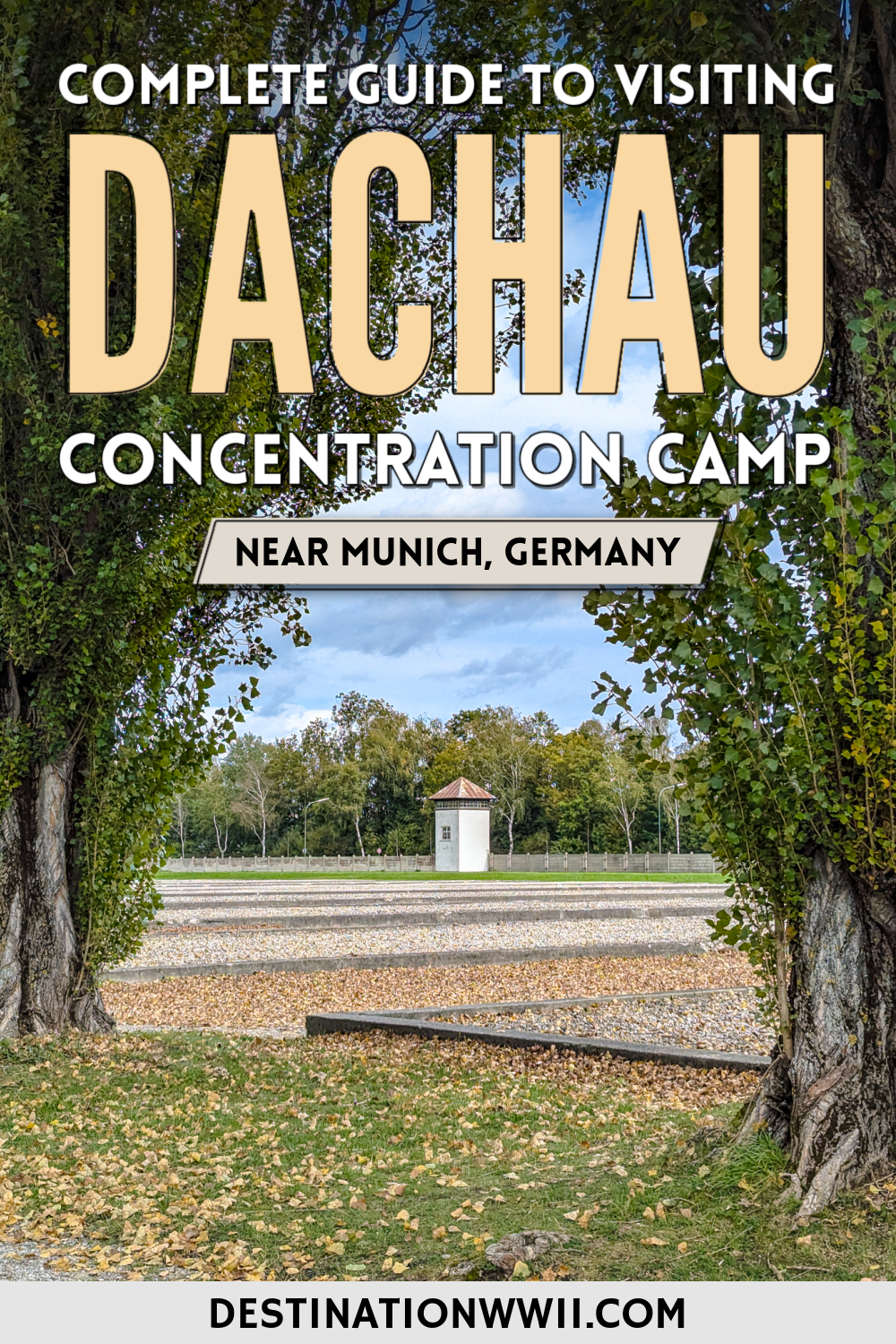Before my first trip to Germany, a friend told me to visit Dachau Concentration Camp and that the experience would change my life. Wait just a minute… can you visit Dachau? Yes, you most certainly can.
The former concentration camp has since been turned into a memorial site. It opened to the public in 1965 and welcomes around 800,000 visitors each year.
And while visiting a concentration camp was completely off my tourist radar at the time, I took him up on his suggestion. My first time visiting Dachau Concentration Camp was back in 2012 and my friend’s prediction proved true. The experience changed me. I’ve since been back in 2019 and 2024 (and will visit again in 2025), and it changes me more every time.

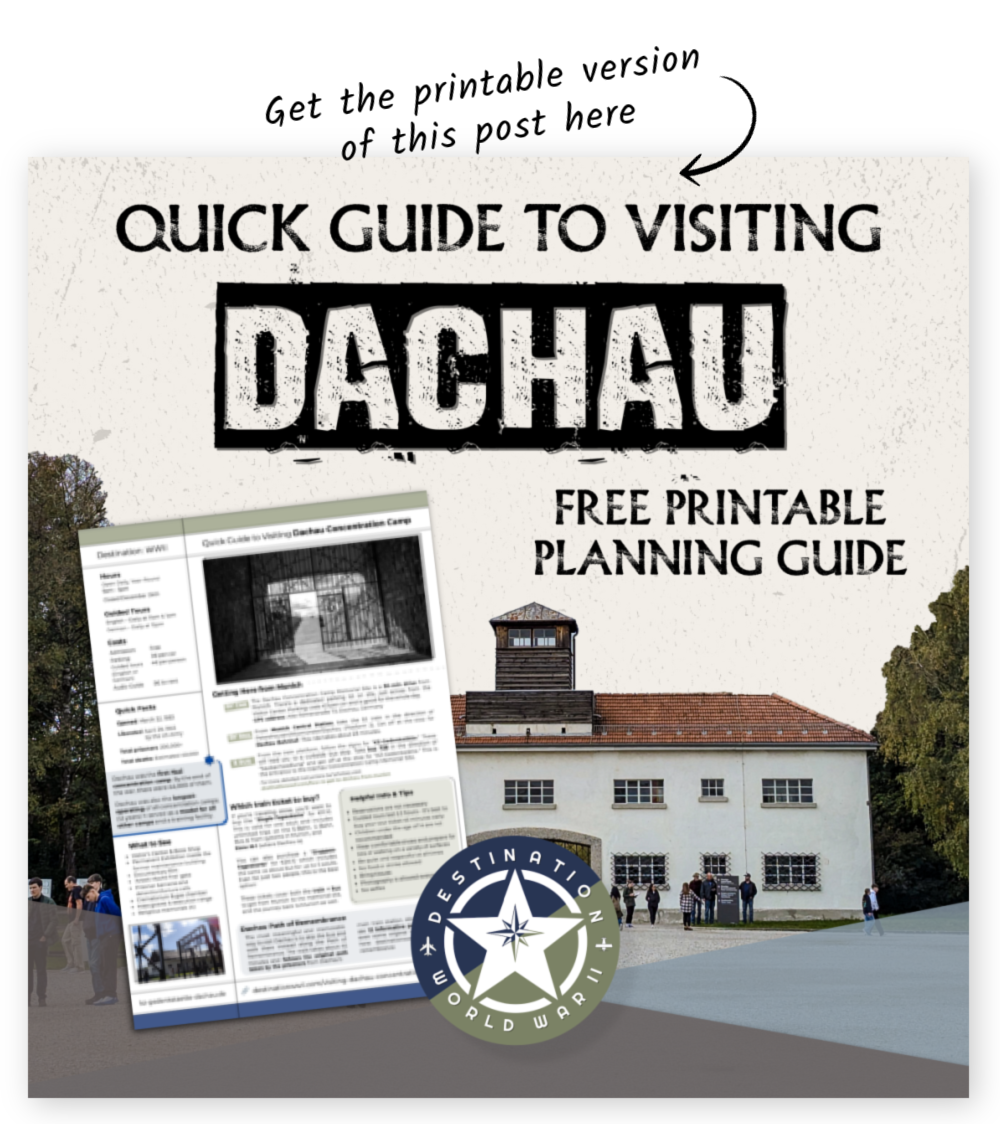
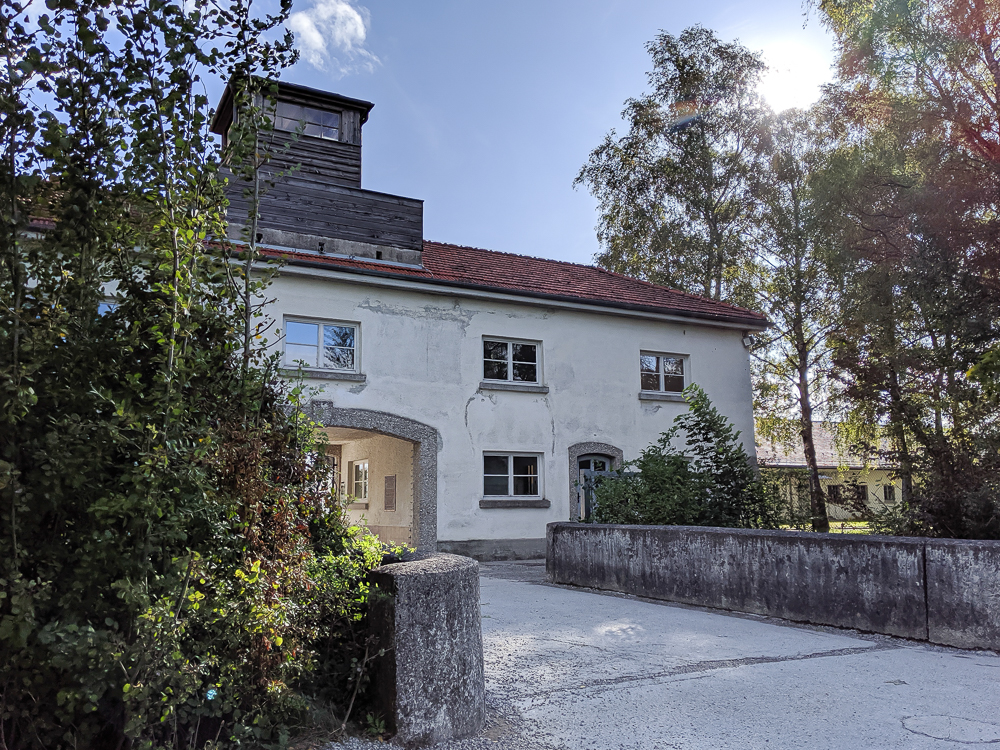
Is it worth visiting Dachau Concentration Camp?
Absolutely, 100%, it’s worth visiting Dachau Concentration Camp. You can’t understand suffering, fear, perseverance, and you really can’t understand the Holocaust until you’ve visited a concentration camp.
The experience is unlike even your wildest imagination and it’s so much bigger than you’ve ever imagined. It’s not necessarily a pleasant way to spend a day on vacation, but it’s definitely a worthwhile and important one. If you’re looking for a no-holds-barred WWII learning experience, this is about as raw as you can get.
Because seven years had passed, I spent some time visiting Dachau Concentration Camp again in September 2019 to refresh my memory. It turns out I’d remembered everything from my first visit, word for word, image for image. At the same time, I’ve since visited even more times, and still I learn something new each time.
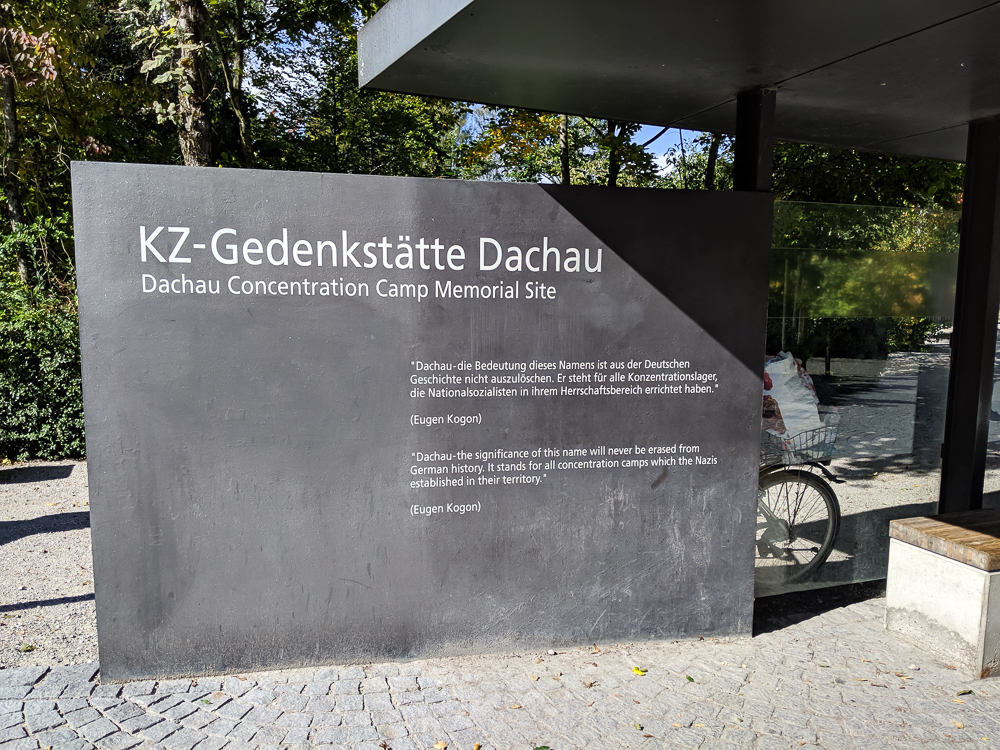
You can find my full guide the World War II sites of Munich in this link.
About Dachau Concentration Camp: some facts
1. Dachau Concentration Camp began operation on March 22, 1933 in the town of Dachau, about 10 miles northwest of Munich, Germany (the birthplace of the Nazi party).
2. It began as a camp strictly for political prisoners—social democrats, communists, other Nazi political opponents and the like—and held 4,800 prisoners when it opened.
3. As we know, Dachau expanded in both size and population to imprisoning other groups like Roma, homosexuals, Jehovah’s Witnesses, and in the days following the Kristallnacht of November 9-10, 1938, 10,000 Jewish men. Historians estimate that during its existence, 41,500 people died at Dachau Concentration Camp. However, we will never know the exact number.
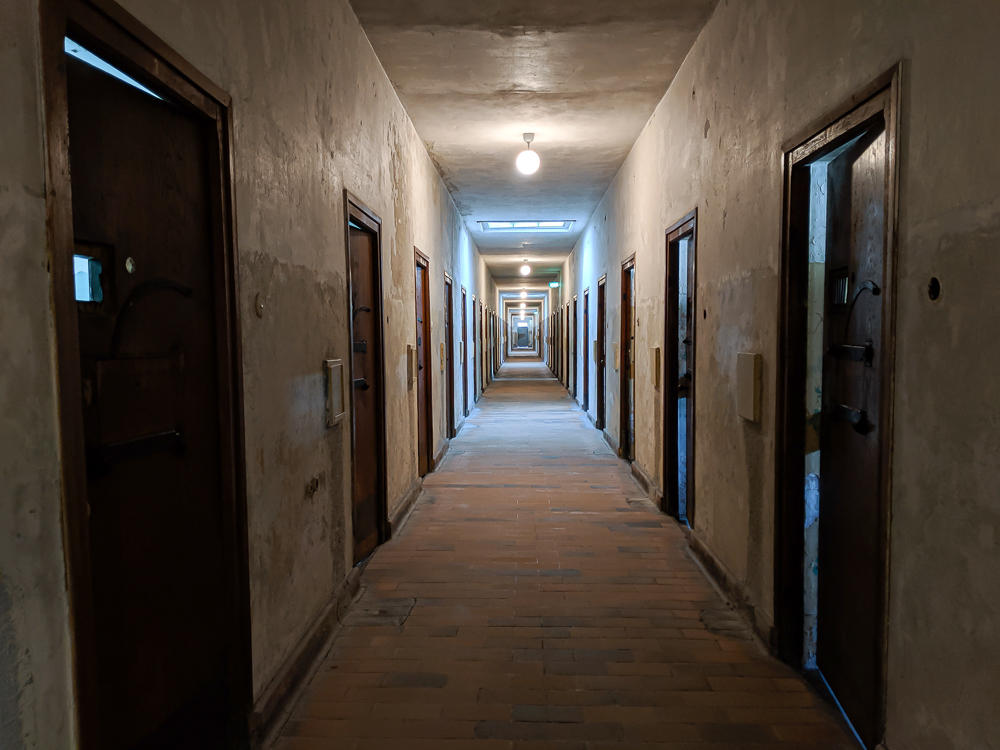
4. Dachau Concentration Camp was the first ever Nazi concentration camp in what would become a total of 44,000 camps and similar incarceration centers.
5. Nazi authorities used it as a training facility for SS camp guards. Because of its “success,” it served as a model for all concentration camps built afterwards. American troops liberated the camp on April 29th, 1945. It was the only concentration camp in operation for the entirety of the Third Reich.
Looking for another great day trip from Munich? Don’t miss the Eagle’s Nest in Berchtesgaden. (And the many other WWII sites in Berchtesgaden.)

How to get to Dachau Concentration Camp
Located just 10 miles from Munich, visiting Dachau Concentration Camp is both quick and easy via public transportation or by car. I’m going to briefly summarize how to get here from Munich below, but definitely check out my comprehensive guide on how to get to Dachau from Munich.
That link has everything you need–all 5 ways to get here with all steps included. Which trains to take, which train tickets to buy, where to find the trains and buses, and tons of pro tips (because I’ve personally visited 4 out of the 5 ways!).
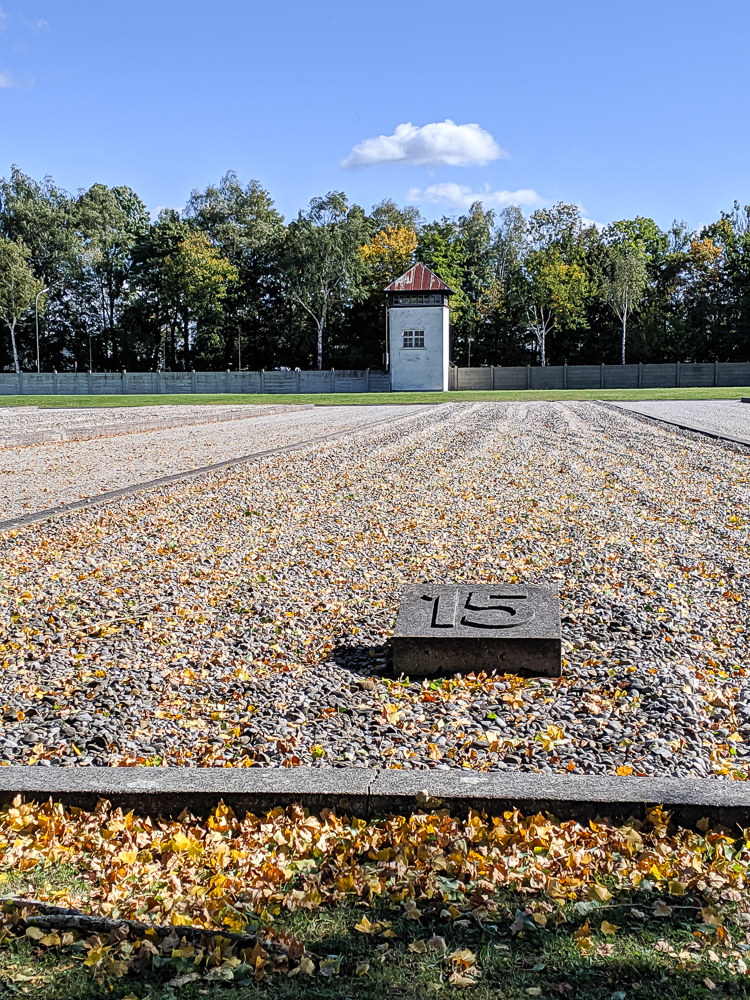
Visiting Dachau Concentration Camp by car
To drive to the Dachau Concentration Camp Memorial Site will take you just about half an hour. It’s a quick and easy drive, and there’s a dedicated parking lot once you get here. Parking costs just €3 per car. Take a look at rental options here if you’d prefer to drive.
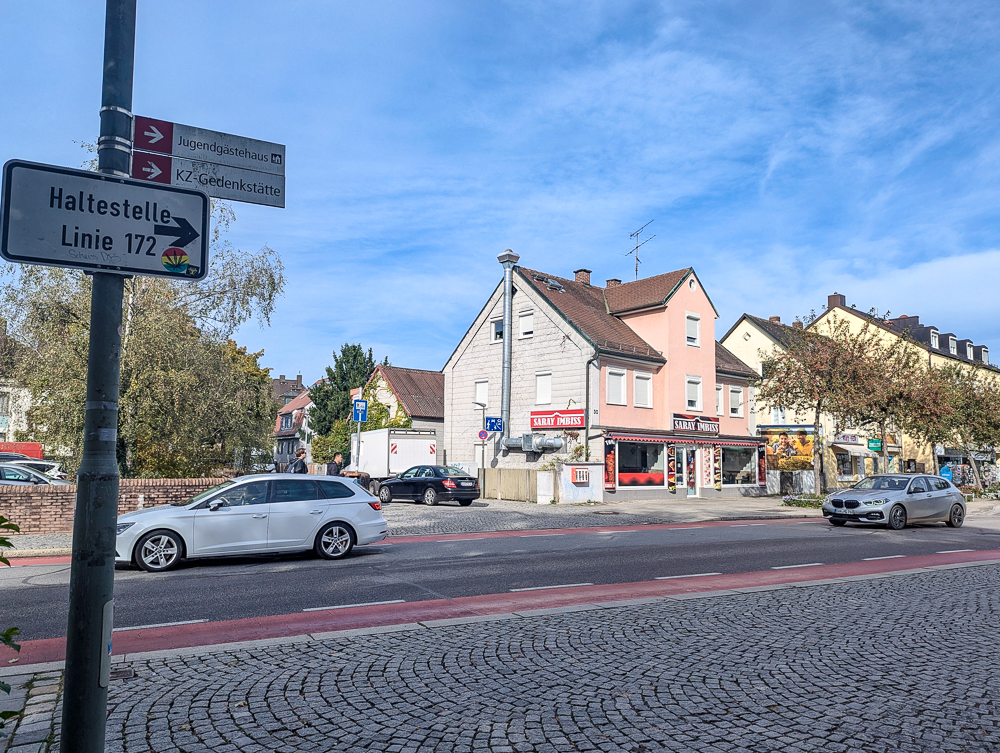
Visiting Dachau Concentration Camp via public transportation
The most common way to get here is to take the train from Munich, and then the bus from the Dachau train station to the memorial site. Set aside about an hour each way for this, though it will most likely take much less. (It’s always good to be prepared for delays and such!)
You can take either the S2 train or the RB16 train from Munich Hauptbahnhof. The S2 will take you about 25 minutes to get from Munich to Dachau and trains leave every 10-20 minutes. The RB16 is a direct train that takes about 11 minutes and these leave once per hour. (You can see train timetables here.)
Once at the Dachau train station, you’ll then take Bus 726 from here to the former concentration camp. This ride takes about 10 minutes and drops you off right behind the Visitors Center.
For more on which tickets to buy and exactly which trains to get on, see my guide to how to get from Munich to Dachau here.

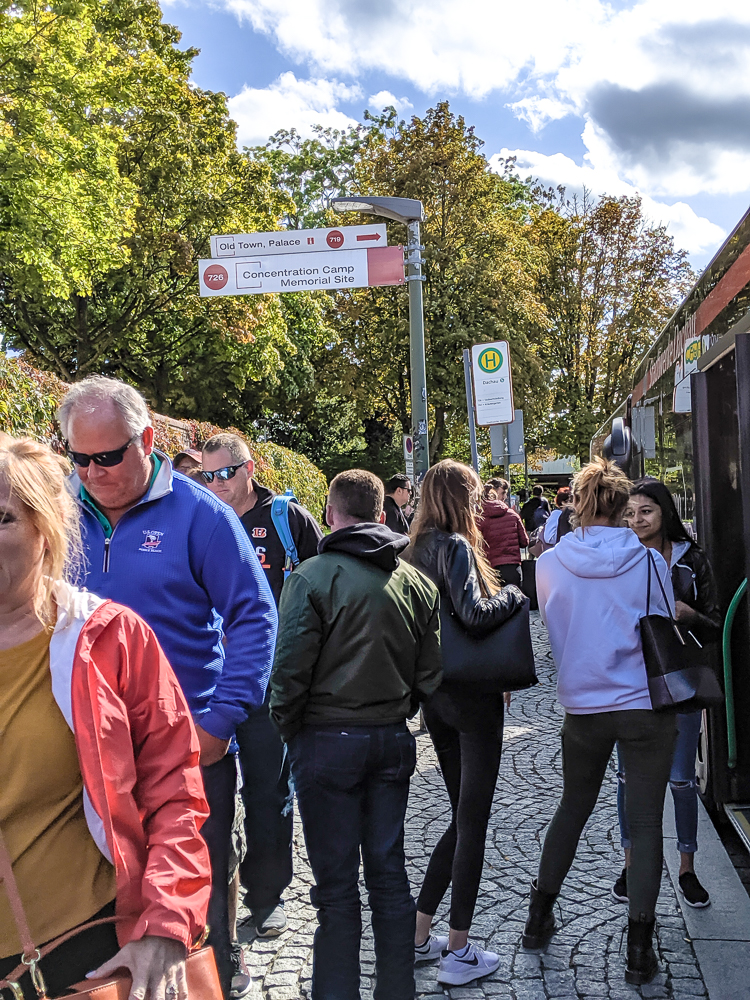
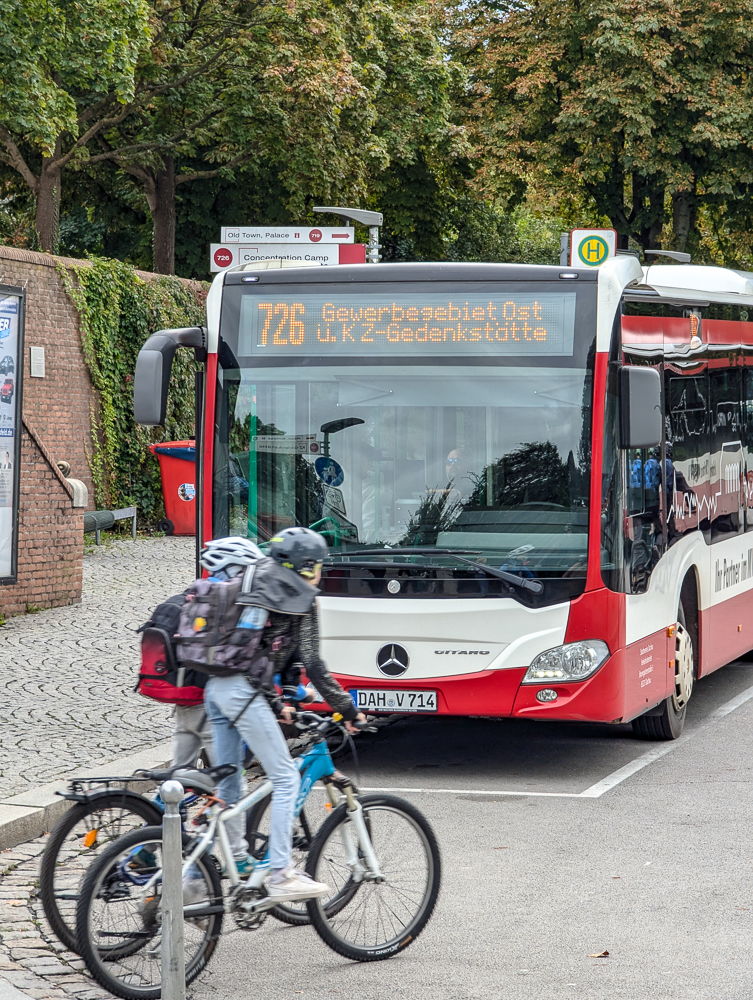
Walking to Dachau Concentration Camp
Instead of taking the bus from the Dachau train station to the former concentration camp, you can actually walk if you want. In fact, I encourage you to do so!
The route from the train station to the memorial site is an official walking route called the Path of Remembrance. It follows the original route the prisoners were forced to take after arriving in Dachau. Along the way, you’ll get to read several informational panels on the camp’s history, the prisoners’ experiences, and more.
For all the information you need on arriving to Dachau this unique way, see my guide to walking the Dachau Path of Remembrance here.
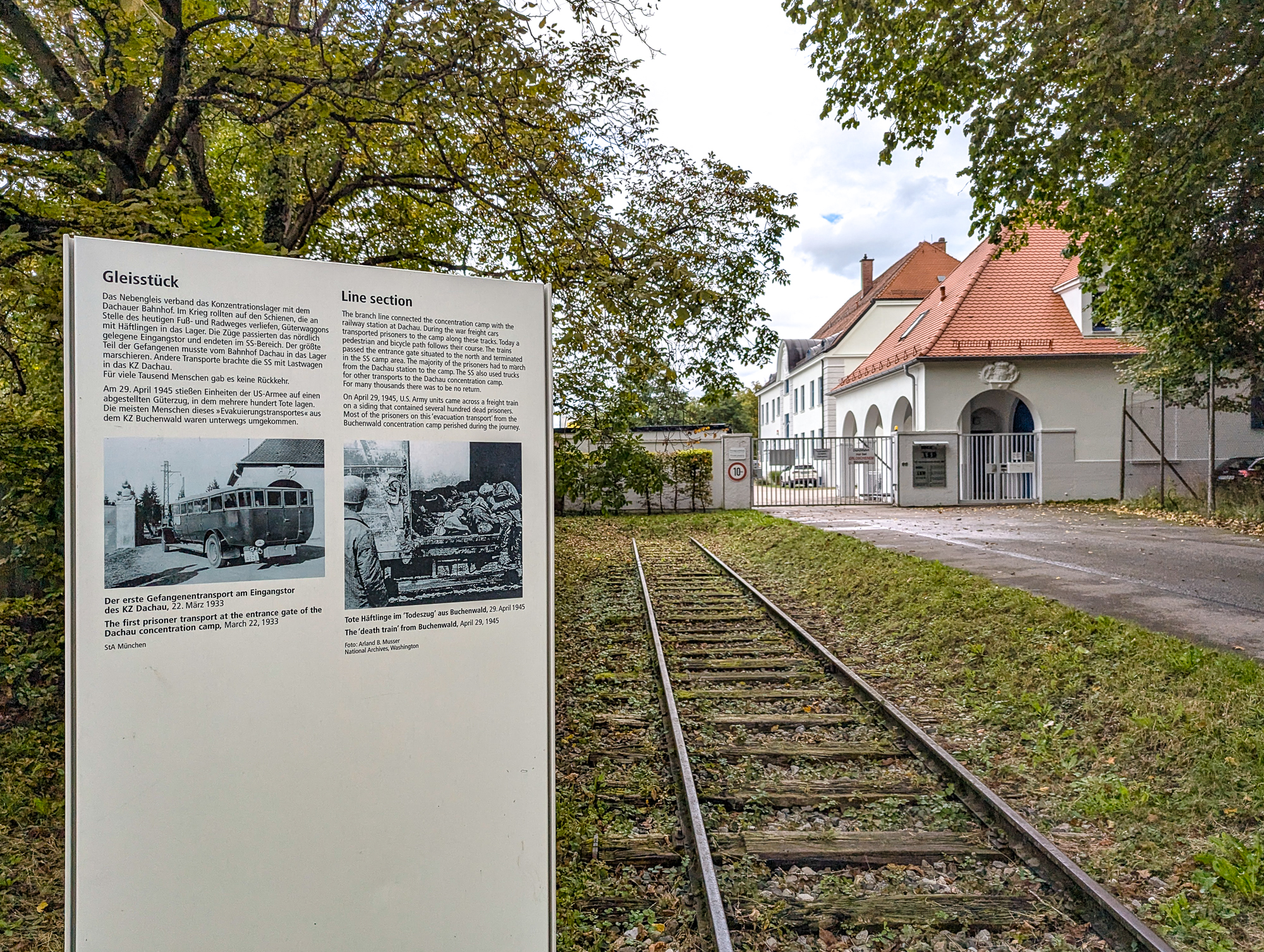

What to see when visiting Dachau Concentration Camp
Technically speaking, when visiting Dachau Concentration Camp you can expect a large number of explorable sites spread out around an unbelievably huge piece of property. Among them you can see:
Visitors Center
This is where you’ll want to begin your visit. (And will be the first building you encounter upon arrival.) The Dachau Visitors Center includes:
- Cafeteria with snacks, drinks, hot meals, and plenty of indoor and outdoor seating
- Information counter where you can pick up audio guides and free brochures
- Tour group sign up and meeting spot
- Book store and “gift shop” if you want to call it that
- Restrooms
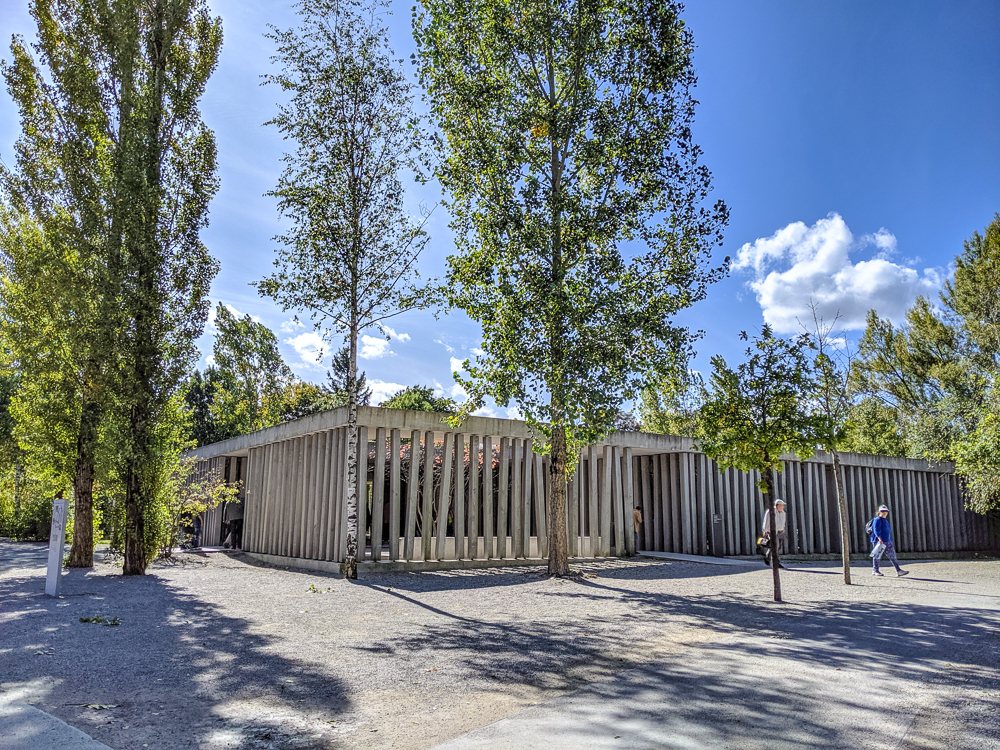
Read also: Visiting Terezín Concentration Camp from Prague: How to Get There, What To See, Tips, and More. (This is the camp commonly known as Theresienstadt.)

Many original buildings and historical sites
The former concentration camp served many different purposes after the war, so the camp has undergone many changes. However, some of the original historical sites you can see at Dachau include:
- The camp’s main entrance gate – the Jourhaus – which includes the famous “Arbeit Macht Frei” gate
- Several original guard watchtowers and barbed wire fences that surround the camp
- Original prison barracks and detention cells used to isolate, torture, and murder some of the more “troublesome” prisoners. (Among them, Georg Elser, the German carpenter who attempted to assassinate Hitler in 1939.)
- The camp’s original crematorium – This building also includes access to the fumigation cubicles and the gas chamber that was disguised as a shower.
- Mass graves, an execution range, and blood ditch – Follow the trail that leads into the trees behind the crematorium to see these.
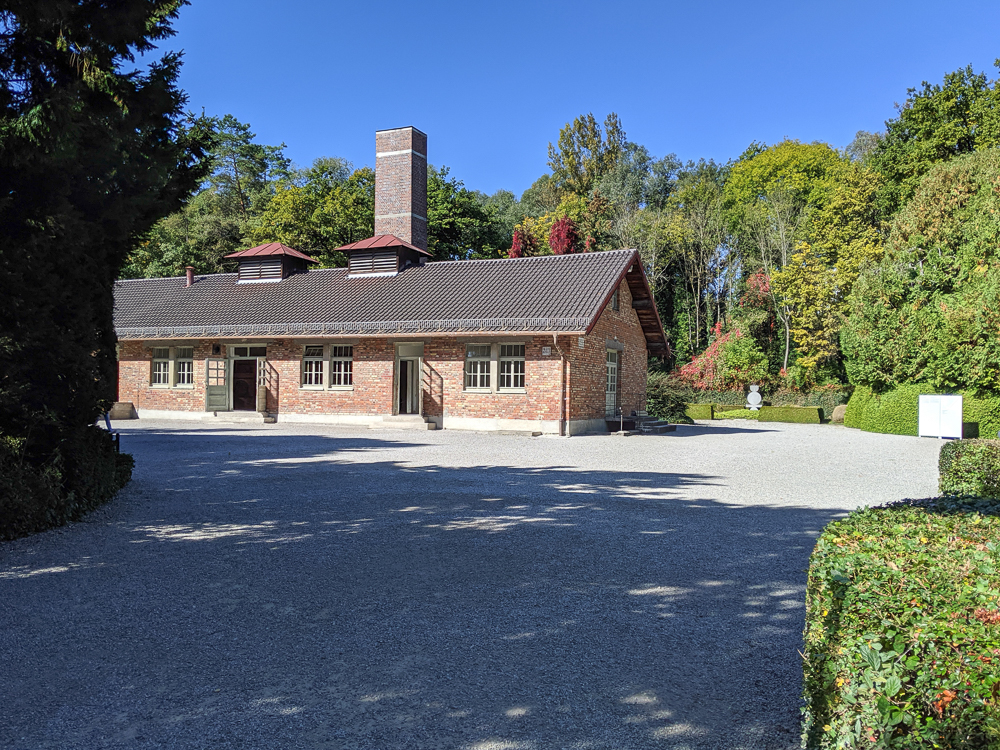

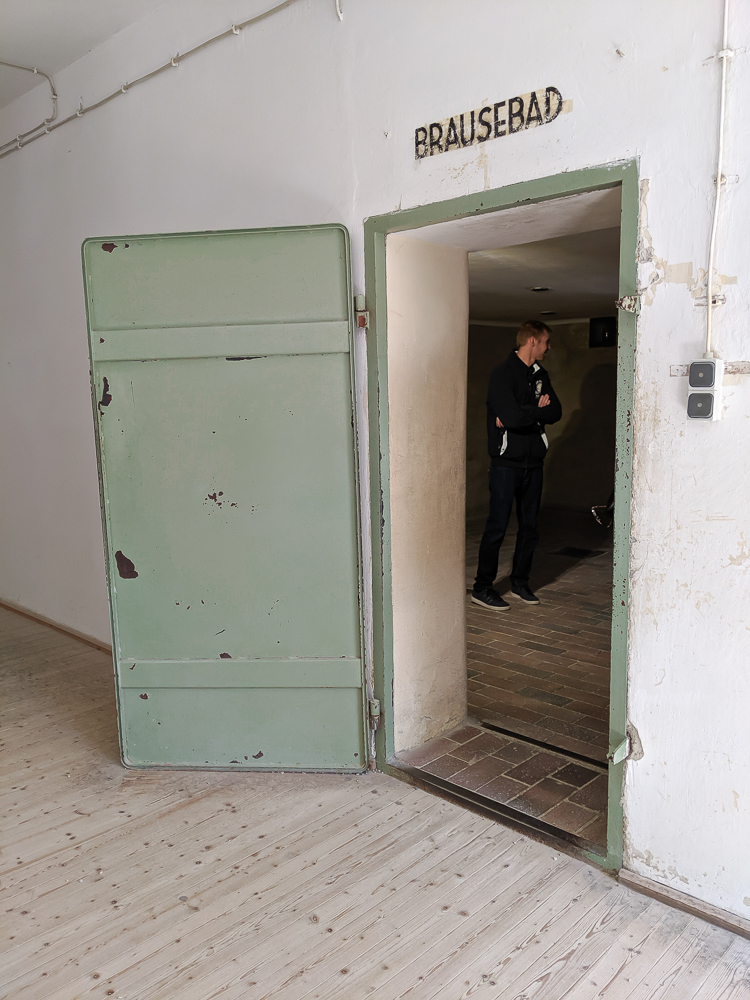
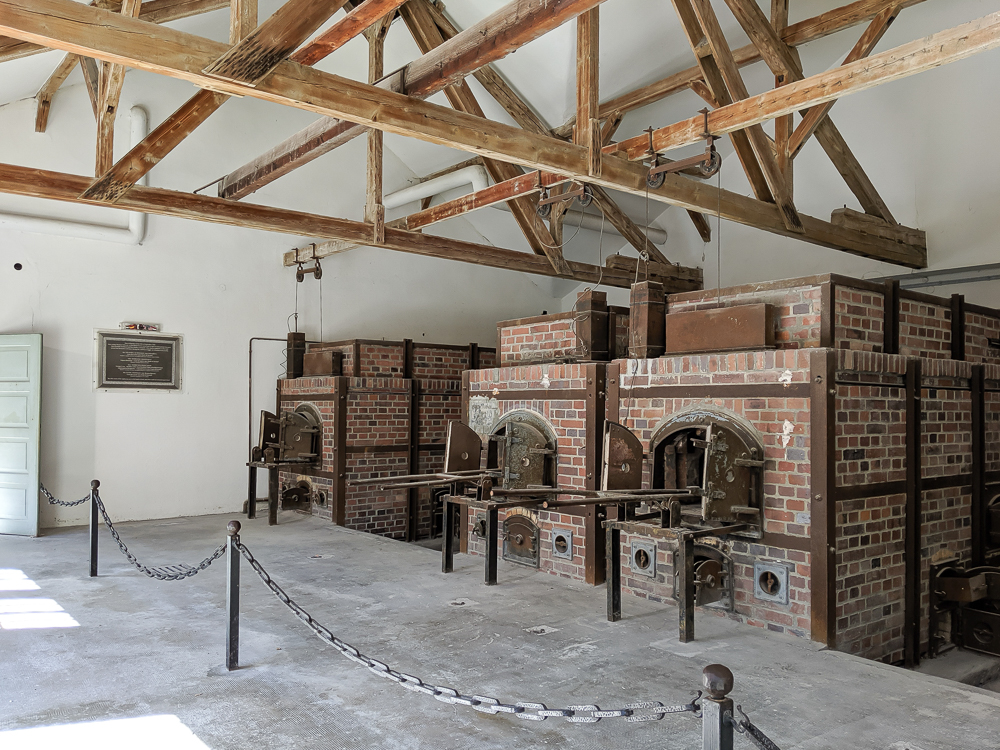
The Permanent Exhibition
The Dachau Memorial Site’s Permanent Exhibition is a large museum-type exhibition inside the former maintenance building. It consists of six sections spread throughout 13 rooms. Informational panels are in both English and German.
It focuses on several topics including:
- The prisoners’ arrivals at Dachau, their lives inside the camp, and their journey to either freedom or death
- Design of the camp and some of its key elements
- The events that led to a Nazi dictatorship and the development of the camp
- The evolution of the Nazi concentration camp system, including its final years
- What happened at the camp after the war
This exhibition is considered the bread and butter of visiting Dachau Concentration Camp and should not be missed. This part will take about an hour in itself. (It spans the entire length of the building.)
The permanent exhibition also features temporary exhibits as well. When I visited in October 2024 the featured exhibit was on the postwar Dachau Trials.
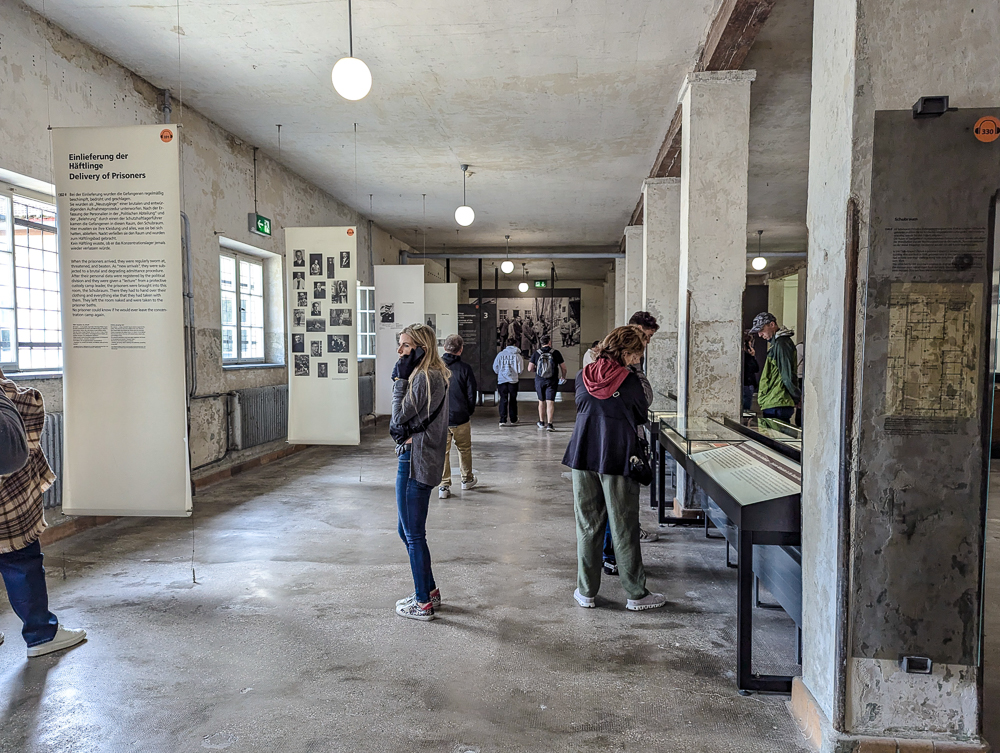

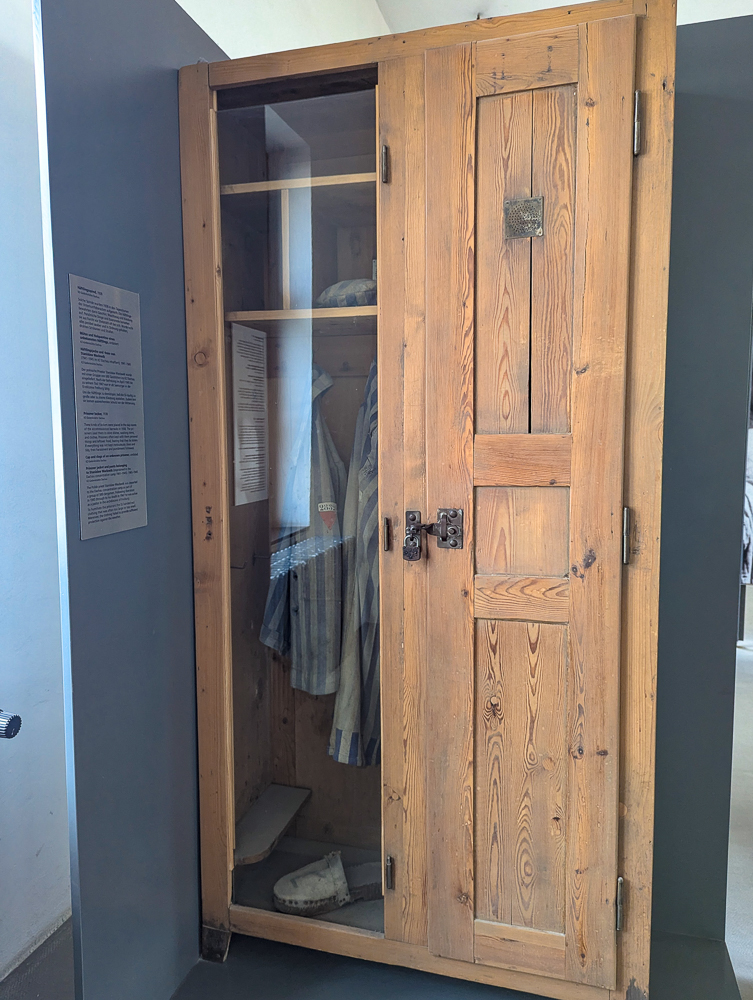
While in Munich, be sure to check out some of the many museums and memorials dedicated to the White Rose resistance movement.
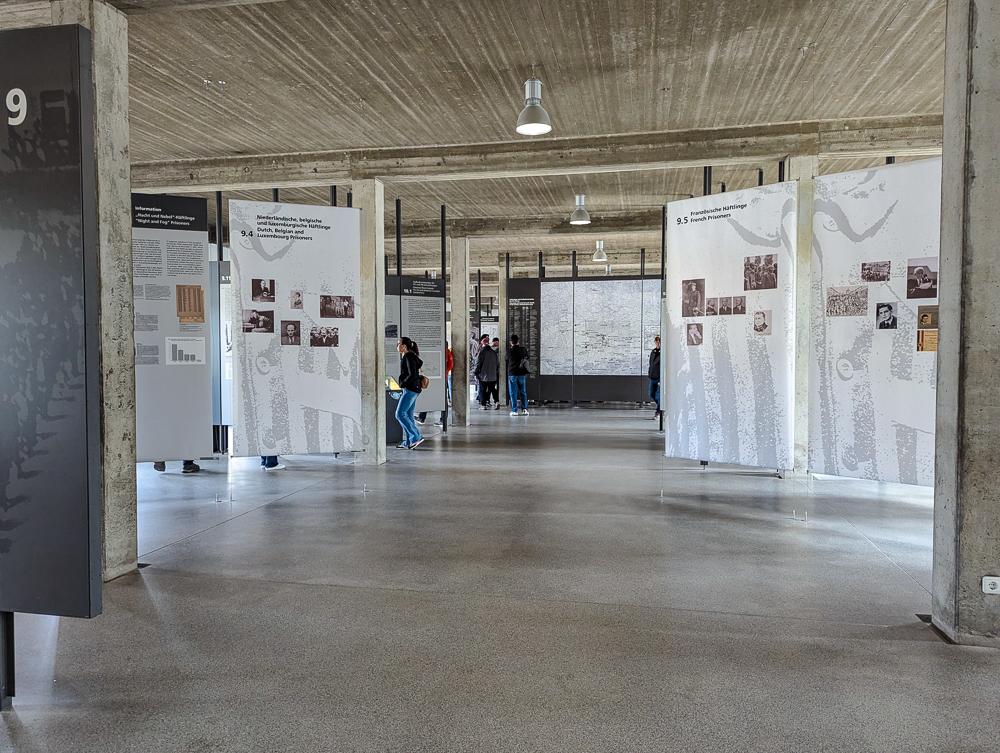
Documentary film
Within the permanent exhibition you’ll have the option of viewing the short documentary film “The Dachau Concentration Camp.” (New version as of 2021.) It covers the history of the camp as well as its implications today. I highly recommend it, but consider yourself warned. Bring tissues; not toddlers.
There are several showtimes throughout the day and in several languages. (English showings are at 10:15am, 11:45am, and 2:00pm.) More information here.
Recreated prisoner barracks
The original prisoner barracks were destroyed after the war, but they’ve since rebuilt one to original specifications. You’re free to go inside and check it out to try to get a feel for the prisoners’ living space.
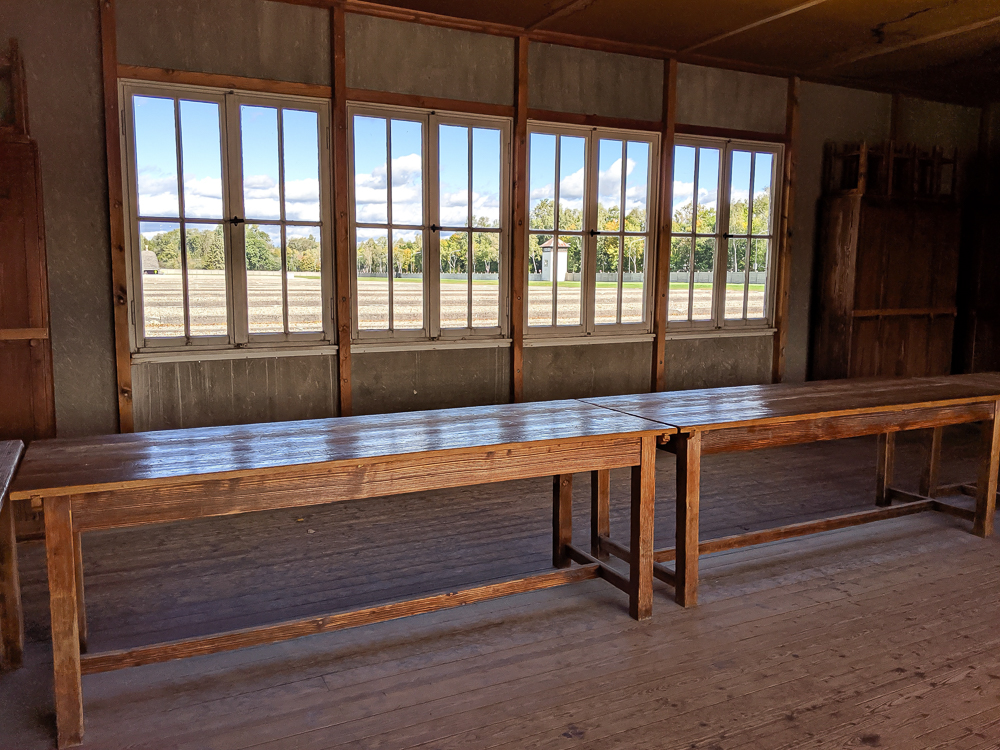
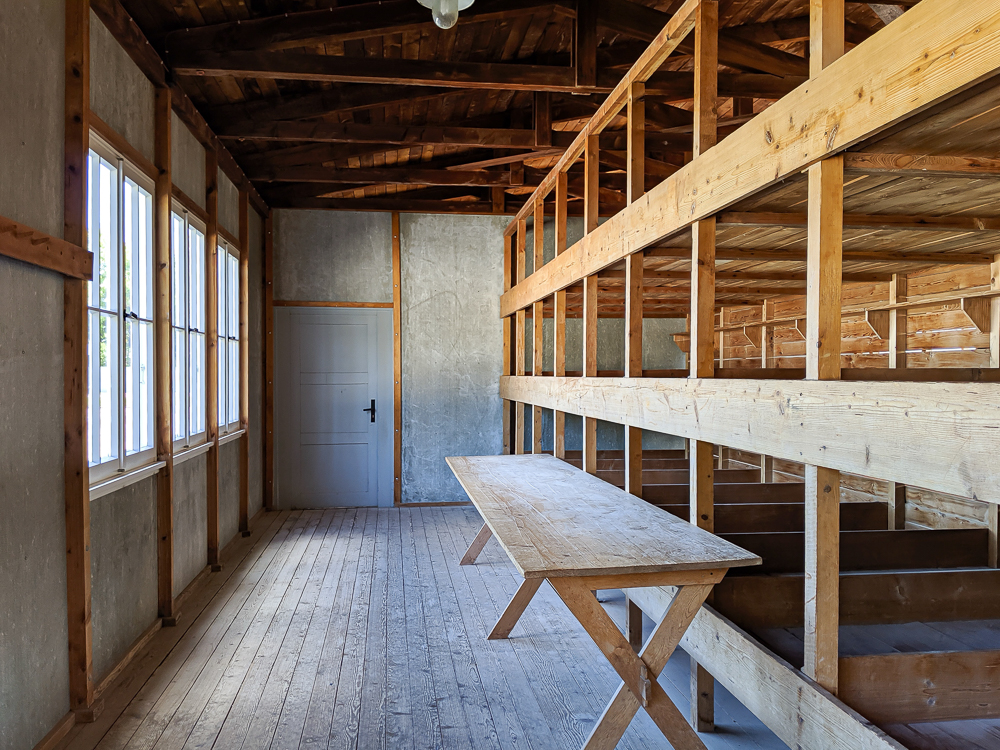
Camp Road & Roll Call area
The large gravel area outside the front of the maintenance building served as the Roll Call area. This is where the SS guards would carry out the twice daily hours-long roll call process as well as punishments and drill exercises.
The center walking path that divides the camp is known as Camp Road. The original trees planted by the prisoners in 1937 were later removed. They have since been replaced with the ones you see today.

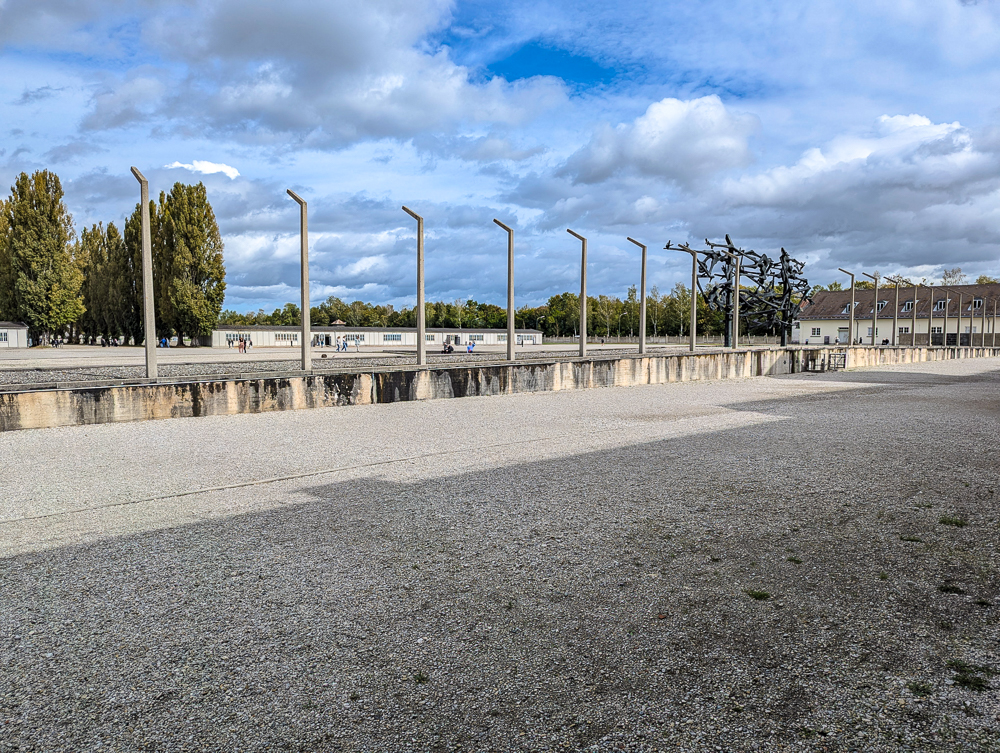

Four religious memorials + a convent
Towards the rear of the camp, you’ll find four religious memorials:
- Mortal Agony of Christ Chapel – The first religious memorial built here (1960)
- Protestant Church of Reconciliation – Initiated by the camp’s Dutch survivors (1967)
- Jewish Memorial – Opened in 1967 with a design full of symbolism
- Russian Orthodox Chapel – Dedicated to the Soviet prisoners, the camp’s 3rd largest victim group (1994)
Behind the Mortal Agony of Christ Chapel, you’ll also find the Carmelite Convent of the Precious Blood. Deliberately chosen for this location, the convent opened here in 1964 to “establish a living symbol of hope.”
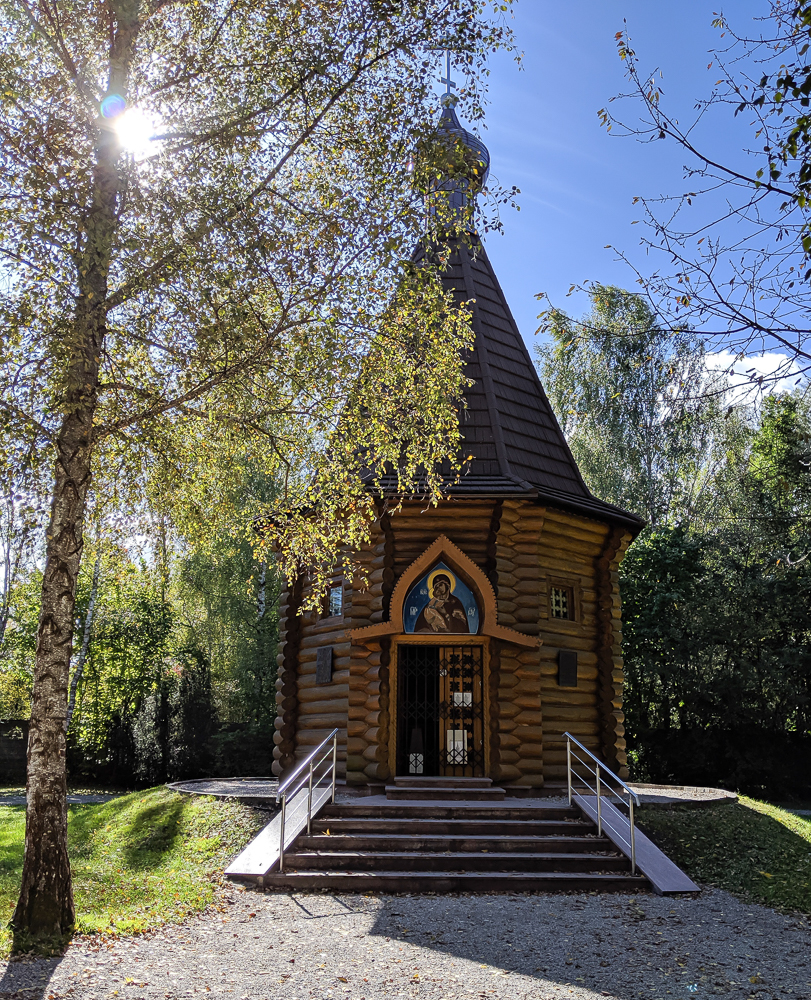
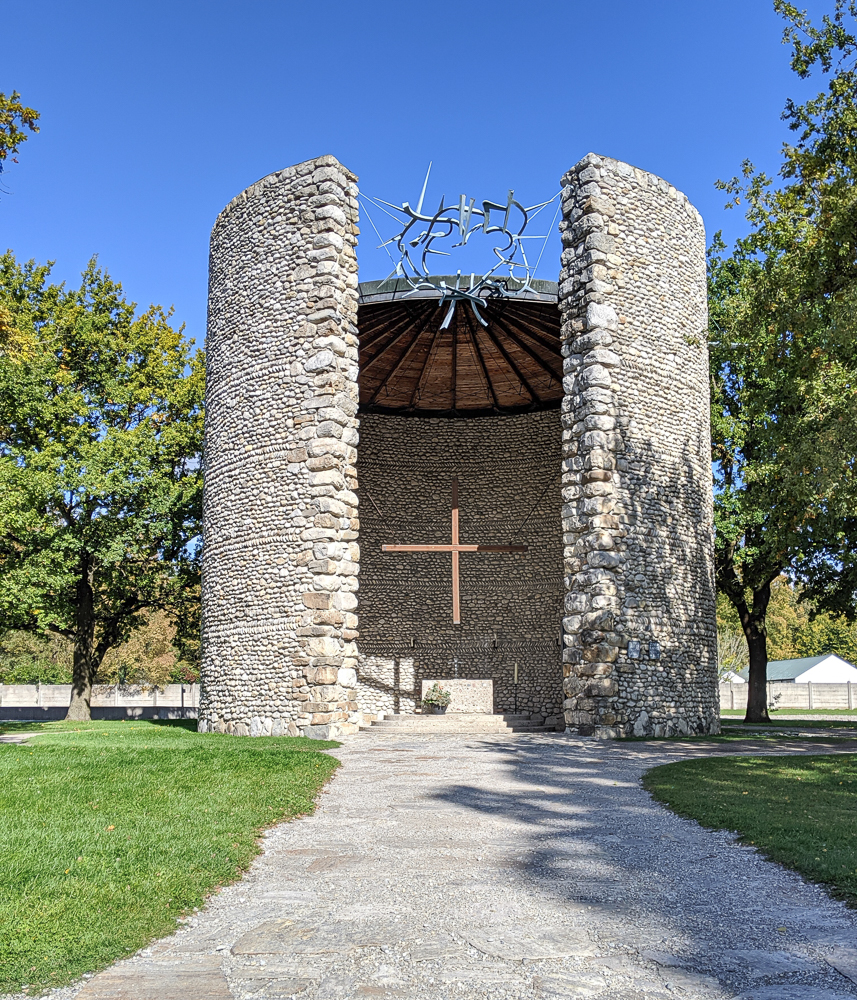
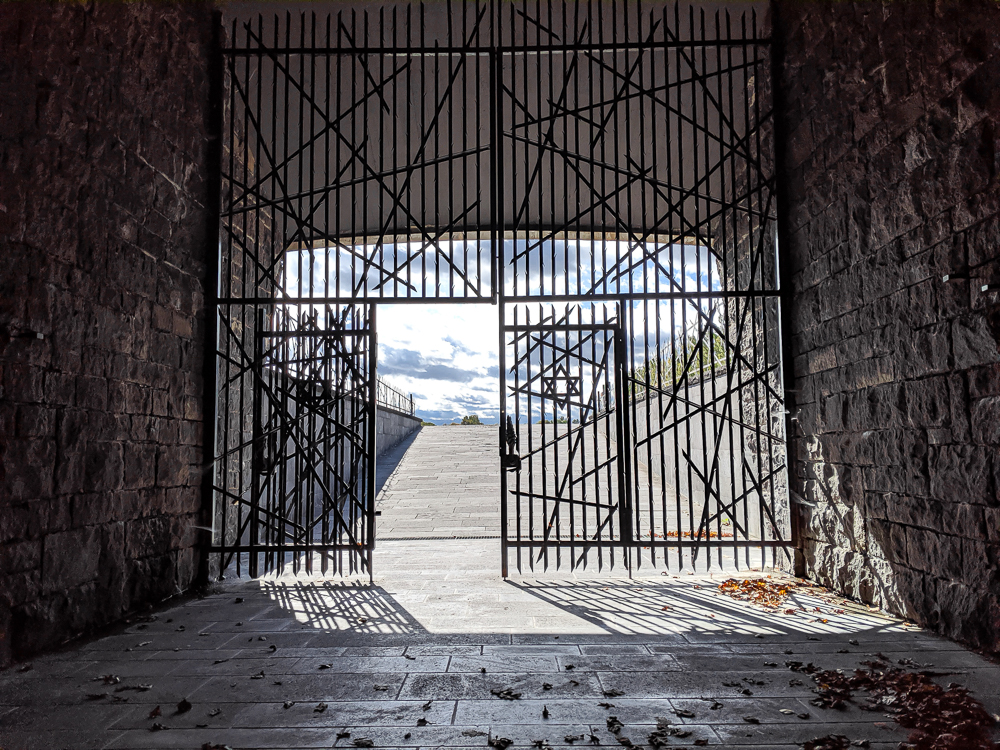
Informational panels & augmented reality
You’ll also find an enormous, wide open property that’s bigger than you can imagine. Throughout it are informational panels placed at significant spots around the camp. These make a free, self-guided tour easily possible.
You can also now experience this camp in virtual reality thanks to a new immersive app called ARt. It merges some of the former prisoners’ drawings and paintings with the scenes around you to help you better understand their experiences. More info on that here.
Related: Check out what else there is to see and do in Munich in this post.
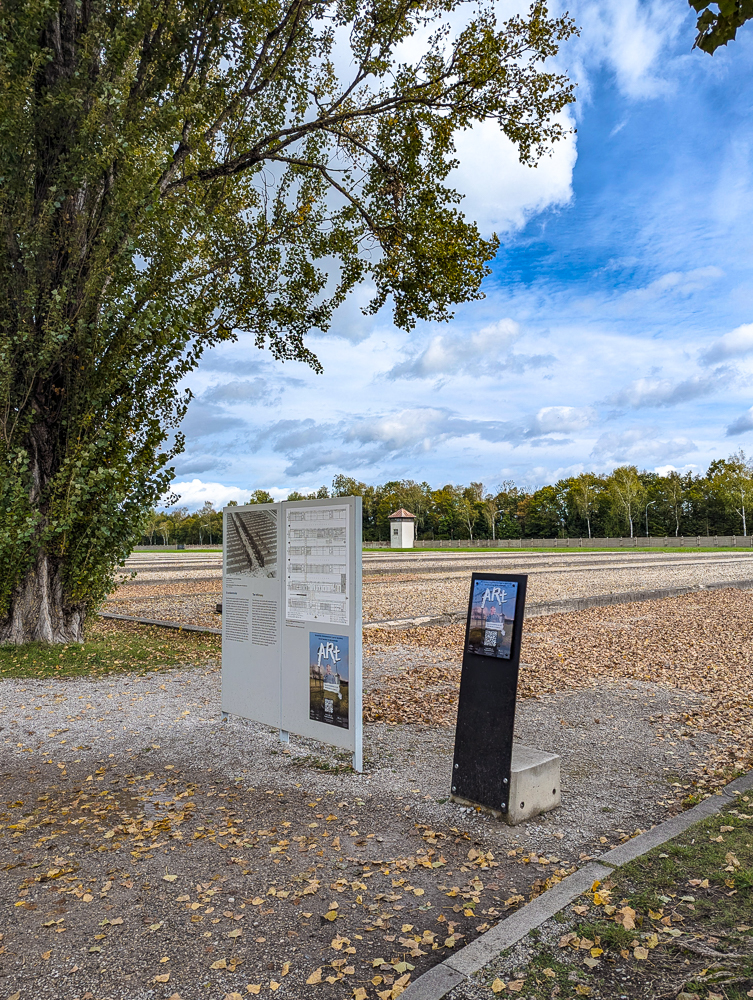
What to expect when visiting Dachau Concentration Camp
Beyond the actual historical and informative sites you can see, while visiting Dachau Concentration Camp you can also expect:
A sea of information
An unreal amount of information concerning all topics related to Dachau Concentration Camp, actually. Whether you take a guided tour, a self-guided audio tour, or simply walk around alone and read the informative panels, you’re sure to learn so much.
A somber environment
The Dachau Concentration Camp Memorial Site is just that—a memorial site dedicated to the men, women, and children who suffered and died here. It’s not a “tourist attraction.” Because of this, the site has a totally understandable list of guidelines for visitors. Please act appropriately.
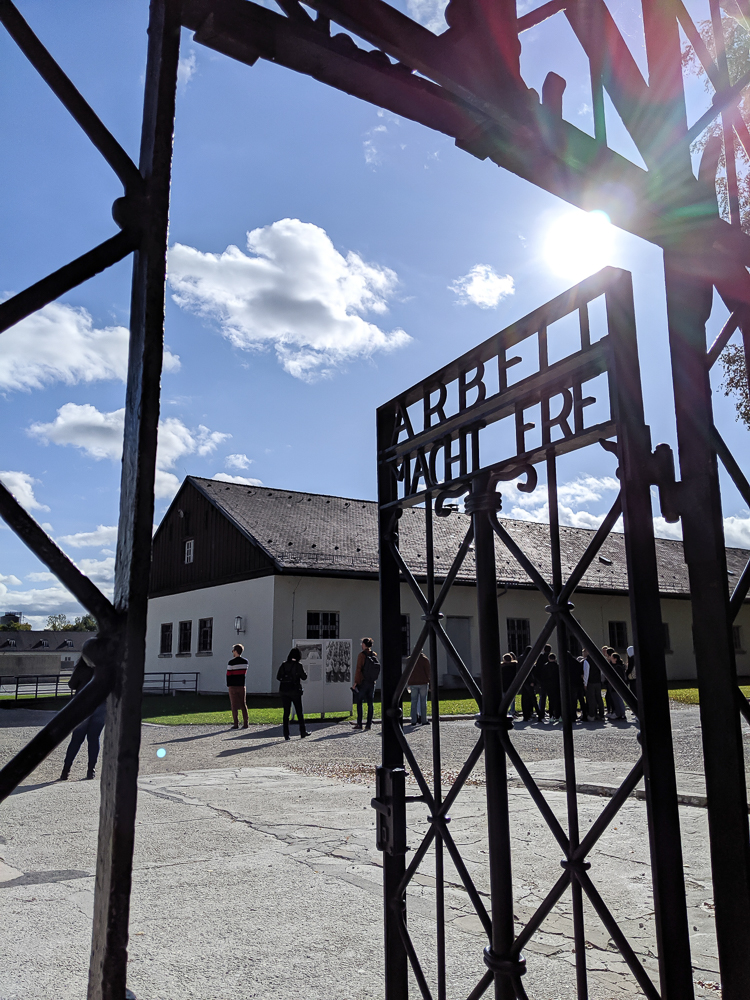
A lot of walking
The former concentration camp is enormous so be prepared to rack up those steps. Also worth noting, most of the property is covered in gravel so wear suitable footwear.
Exposure to the elements
Because most of your visit will take place outside, be sure to dress according to weather conditions—rain coats and umbrellas, sunglasses and sunscreen in the summer, warm outerwear in the winter, etc.
A new outlook
Most importantly, you can expect to look at life completely differently after your day visiting Dachau Concentration Camp.
Also check out: How to Visit Birkenkopf Stuttgart (Germany) for the unique perspective at WWII’s Rubble Hill
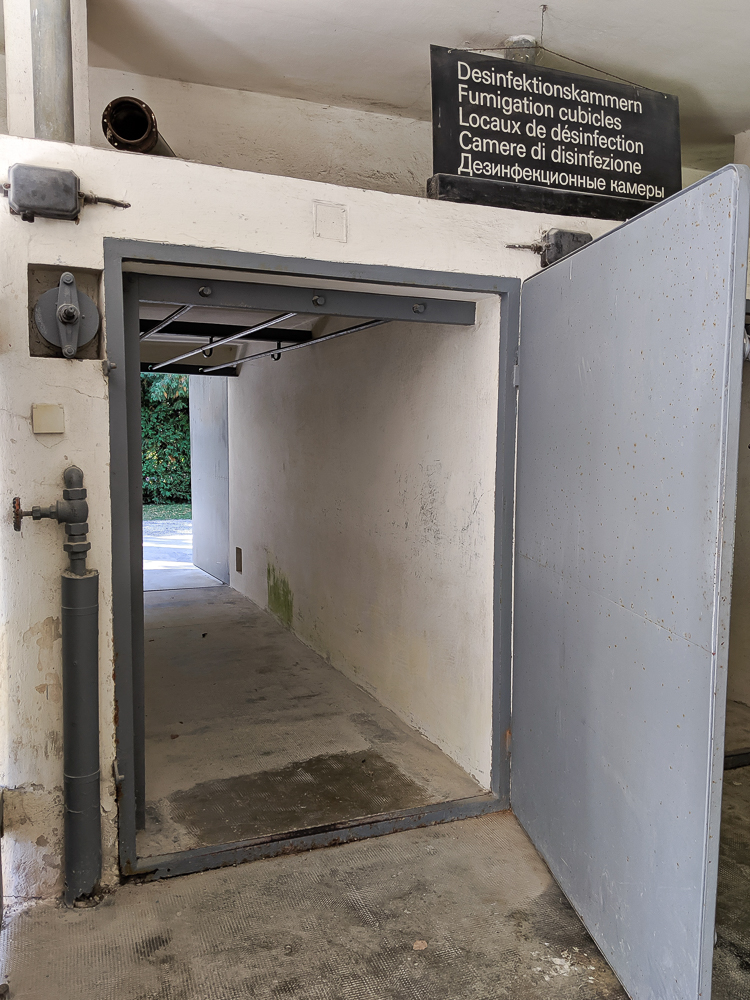

Guided tour or audio guide?
Visiting Dachau Concentration Camp for the first time, I went with one of the amazing guided tours. I have also visited using just the audio guide, and again without any guide at all. If this will be your first time, I highly recommend signing up for one of the guided tours if your schedule allows it.
Dachau guided tours
English-speaking guided tours are offered every day at 11:00 am and 1:00 pm. They last about 2.5 hours, and cost just 4 euros (about the same in US dollars).
They cover the main areas of the site in order to provide a well-rounded overview of Dachau. You’ll visit the former camp grounds, the historical buildings, and some of the permanent exhibition.
However, you’re still free to roam about the property as you wish both before and after your tour. Don’t worry that you’ll be limited to only the sites on the tour. You can spend as long here as you wish.
Tickets for the guided tours are sold on a first come basis at the information desk in the visitors’ center. They’re limited to 30 people each and they do sell out so try to arrive early.
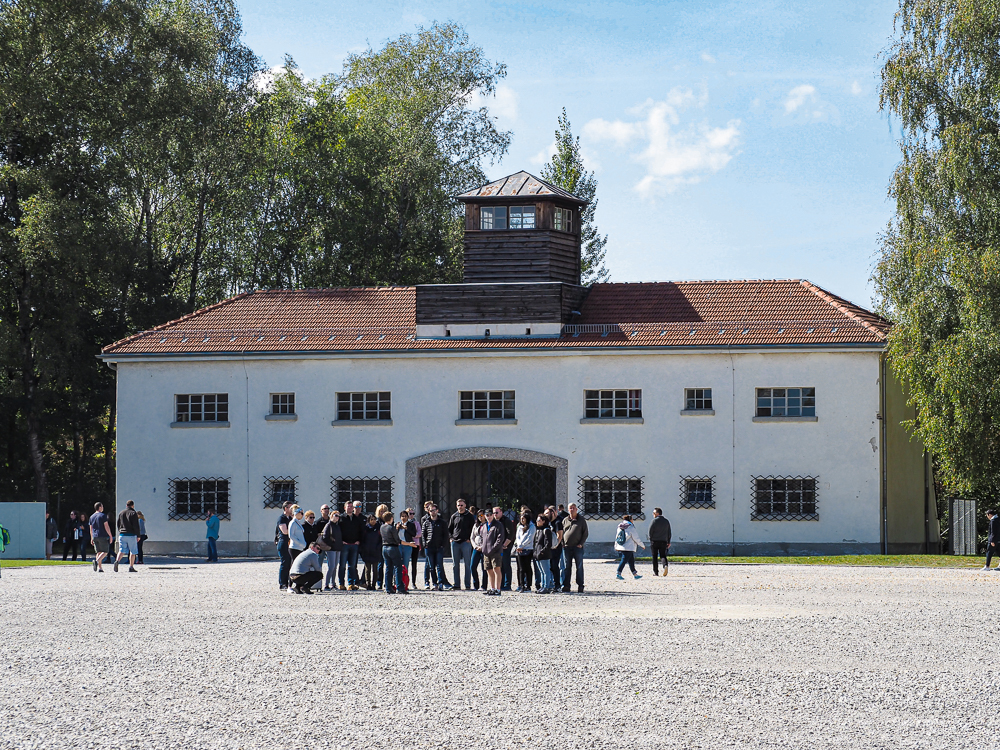
Dachau audio guide
On the other hand, I’ve also visited Dachau Concentration Camp and used the audio guide and it did not disappoint.
The audio guides provide information in 16 languages—English among them—and come with a map you can easily follow along with. They’re comfortable to wear and easy to use. They allow you to pause if you’d like to explore more of an area, do some Googling, whatever. You won’t feel bound to a group and you don’t have to follow any certain order.
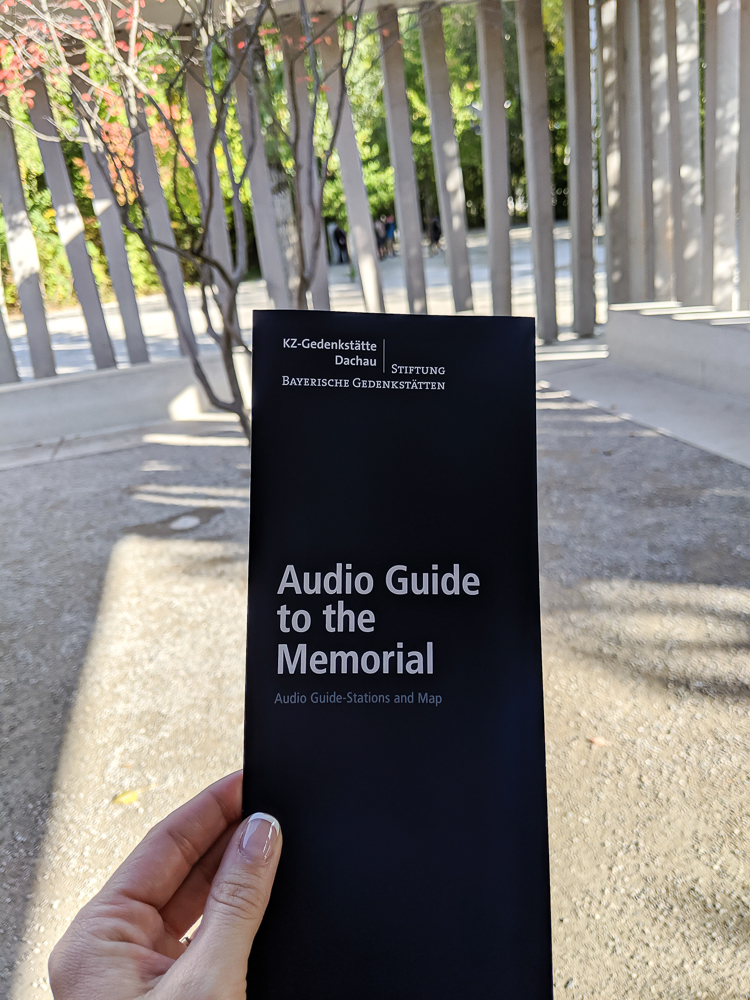
Renting an audio guide
Rental of an audio guide costs just 4.5 euros but requires an additional deposit. For this you can leave either your ID with the person at the front desk or some money. I say “some money” because I feel like their deposit policy is fairly open to interpretation.
Audio guide deposit
I didn’t feel comfortable leaving my ID as a deposit since I only had my passport with me at the time. I was told, after several minutes of digging through my purse to see what else I could leave them, that I could leave 10 euros instead. So that’s what I did.
However, upon returning my audio guide to the desk later, I witnessed another solo female traveler in the same predicament. Only after she expressed not wanting to leave her passport was she given the option to leave 20 euros as a deposit instead. Obviously, this money is returned when you return the audio guide so the amount is negligible, but still, something to keep in mind.
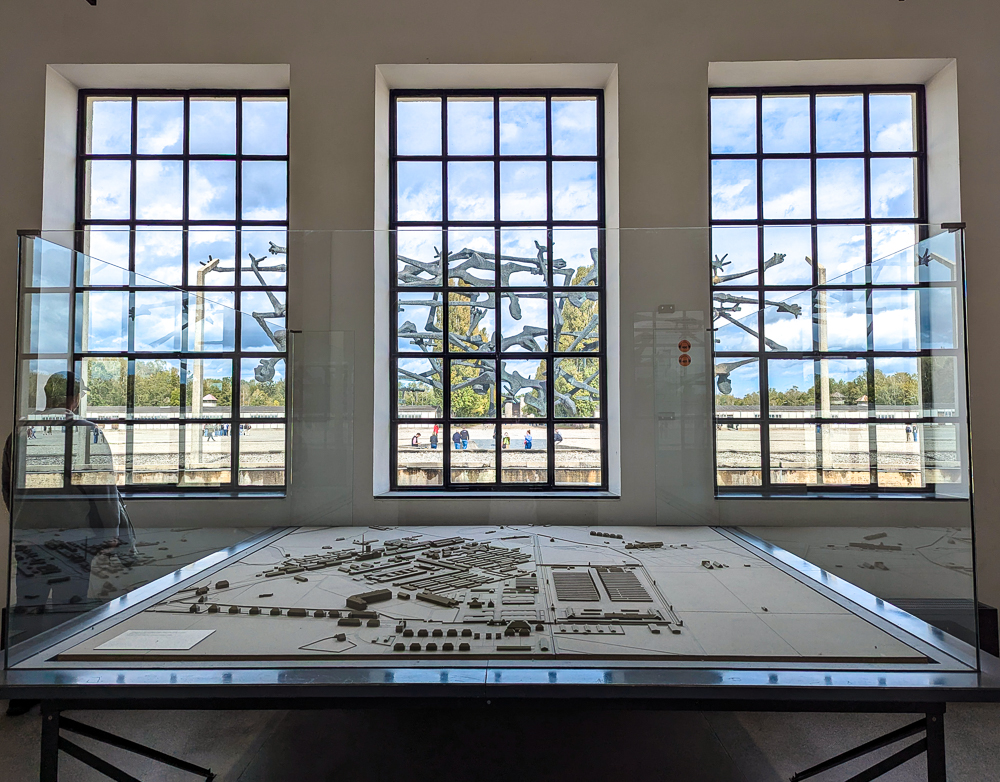
So which one is best?
The information you’ll learn through the audio guide is not much different from the guided tour. In fact, I remember some of the information on the audio guide word-for-word from my guided tour. However, with the guided tour you have the added benefit of being able to ask your tour guide questions.
In other words, you really won’t be disappointed if you decide on one kind of tour over the other.
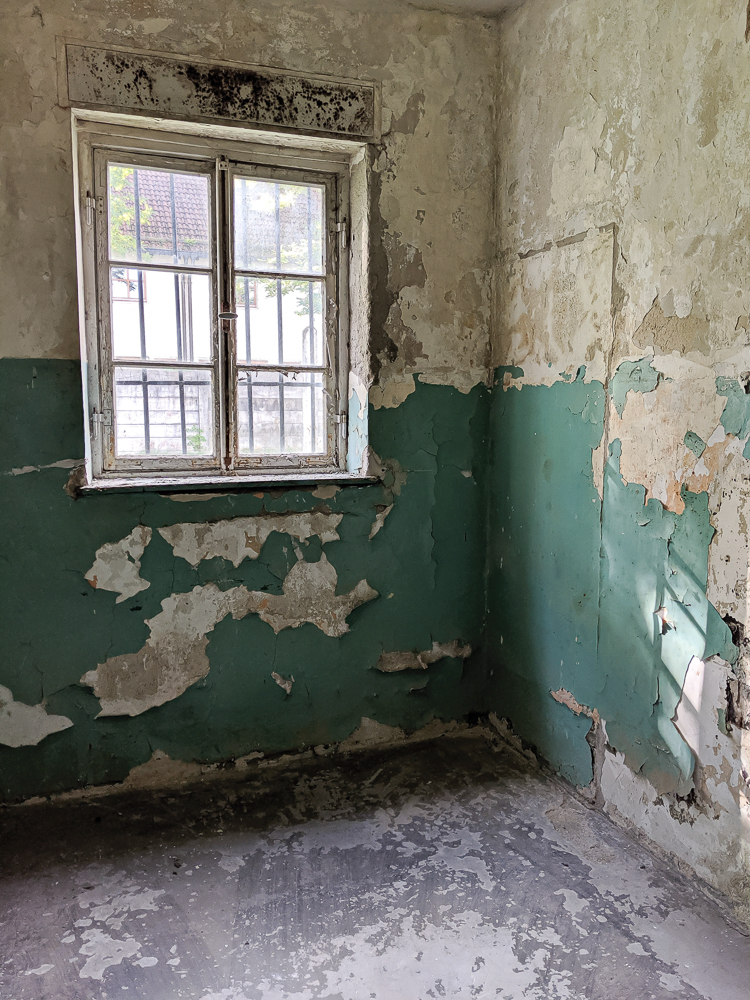

Self-guided Dachau tours
But there is a third option! If you’ve left all your IDs and all your euros at your hotel, visiting Dachau Concentration Camp is still possible.
The memorial site is completely free to visit and the abundance of written information around the site will still teach you what you need to know. You can still view the documentary film, tour the permanent exhibition, visit the bookshop, and explore all of the sites of the former camp.
Pro tip: Download the official Dachau Concentration Camp Memorial Site mobile app before your visit. It offers logistical tips and information, background information on Dachau, summaries of the exhibitions, photos, and more. The app is available for free both on Google Play and the Apple app store.

Things to know before visiting Dachau Concentration Camp
Before you head off to visit the former camp, here are a few things you need to keep in mind:
Raw history
The first thing you should know before visiting Dachau Concentration Camp is that they don’t sugarcoat the history. They don’t hold anything back and they don’t hide from their horrible past. All the ugly facts and photos are put out here for you to see and little here is subtle. If you’re expecting a discreet retelling of historical events, forget about it.
On my way back to Munich, an Australian visitor on the bus asked what I thought of Dachau. He told me he didn’t agree with them allowing visitors into the crematorium. But why not? Hiding the hideousness of the past doesn’t do anyone any favors. (Well, except the Nazis.)
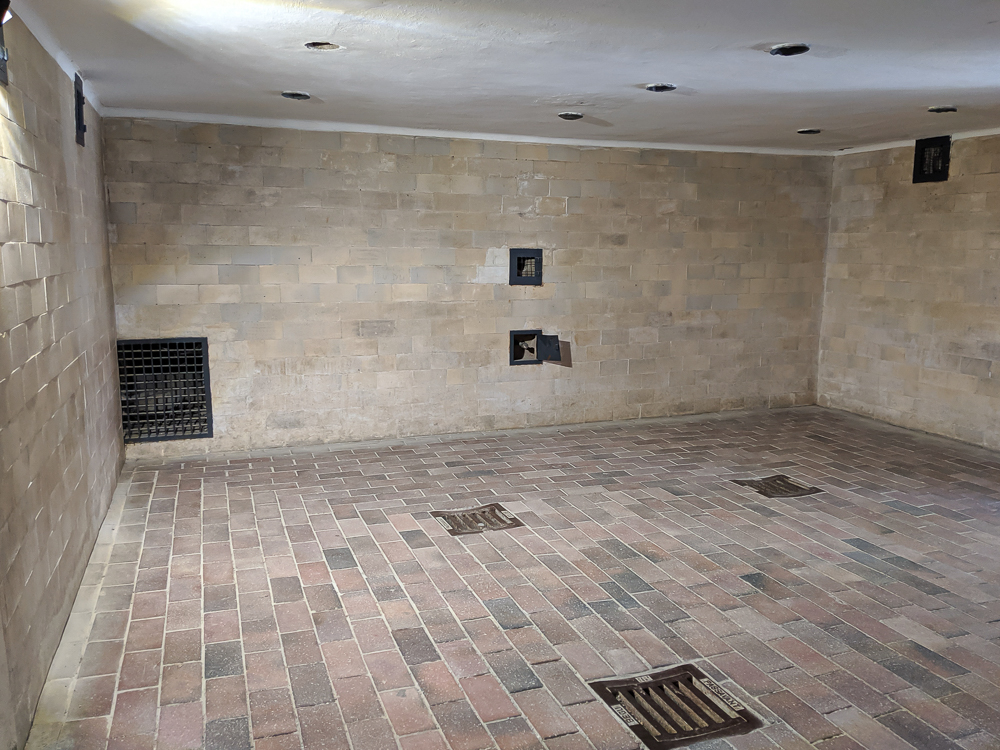
In fact, the former concentration camp that is now the Memorial Site was established “on the initiative of and in accordance with the plans of the surviving prisoners” who joined together to form the Comité International de Dachau (the International Dachau Committee) before the camp was even liberated.
It’s because of this committee and its members that the demolition of the former crematorium was halted in 1955. And it’s because of them that the former camp became an official memorial site in 1965. Opening the crematorium to visitors, for instance, is not exploitation.
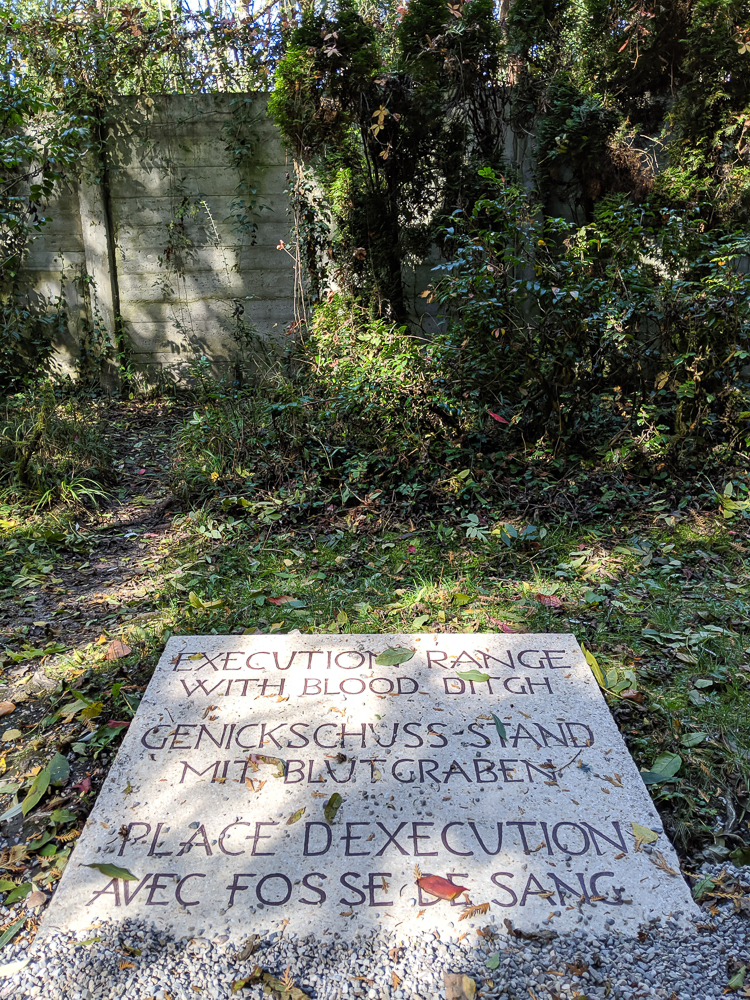
How long will a visit to Dachau Concentration Camp take?
Expect visiting Dachau Concentration Camp to take you around 4 hours. There’s a lot to see here and it’s not the kind of place you can rush through, especially given its size. Plan for a half day (plus an hour to get here and an hour to get back to Munich) to be safe. Most people only visit Dachau once, so be sure to give it its due.
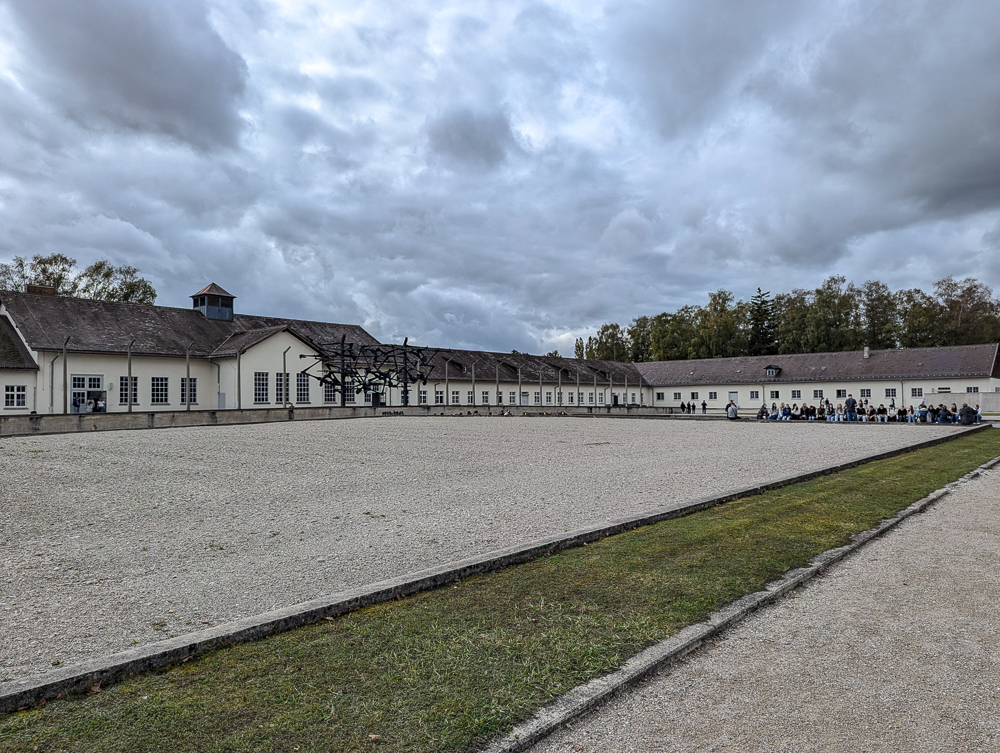
Is there a place to eat lunch?
The Dachau Concentration Camp Memorial Site has an on-site cafeteria that serves snacks, drinks, a variety of hot meals, coffee, sandwiches, desserts and much more. It has plenty of indoor and outdoor seating as well as reasonable prices. You can view the full menu and get more information here.
Eating and drinking anywhere else at the former camp site is prohibited. Since you’ll be here for so long, make sure to plan for lunch in the site’s cafeteria. If you wish to bring your own snacks, you’ll need to leave the premises to eat them.

How to dress for your visit
While here, you’ll spend most of your day outside so dress according to the weather. Also be sure to follow Dachau’s visitor guidelines regarding what you should and should not wear in terms of what’s appropriate and respectful.
On visiting Dachau Concentration Camp with children
The Memorial Site warns that some of the content may not be appropriate for children under the age of 12 but it’s at the parents’ discretion whether they bring their kids or not.
Children can visit when accompanied by their parents however they restrict guided tours to visitors ages 13 and up and the documentary film inside the permanent exhibition has a minimum age requirement of 14. The sign at the entrance to the permanent exhibition says children under 12 are not recommended to enter.
For more on this topic, see my post on visiting concentration camps with kids.

How to prepare for your visit to Dachau Concentration Camp
Here are some of the things you need to consider before your visit.
What to bring with you
Here’s a list of things you should and/or might want to bring with you on your visit to the Dachau Concentration Camp Memorial Site:
- Tissues – You’ll definitely need them
- Weather appropriate clothing and outerwear – That includes scarves, hats, and gloves in the winter; a sun hat, sunscreen, and portable fan in the summer; a rain jacket and/or umbrella
- Walking sticks – There’s a lot of ground to cover here and most of it is covered in gravel
- Outdoor shoes – Lots of walking, gravel, and mud mean you should wear some good outdoor-appropriate shoes
- Refillable water bottle – You’ll be here for a while; gotta stay hydrated (just be discrete about it)
- An ID or some extra cash to use as an audio guide deposit
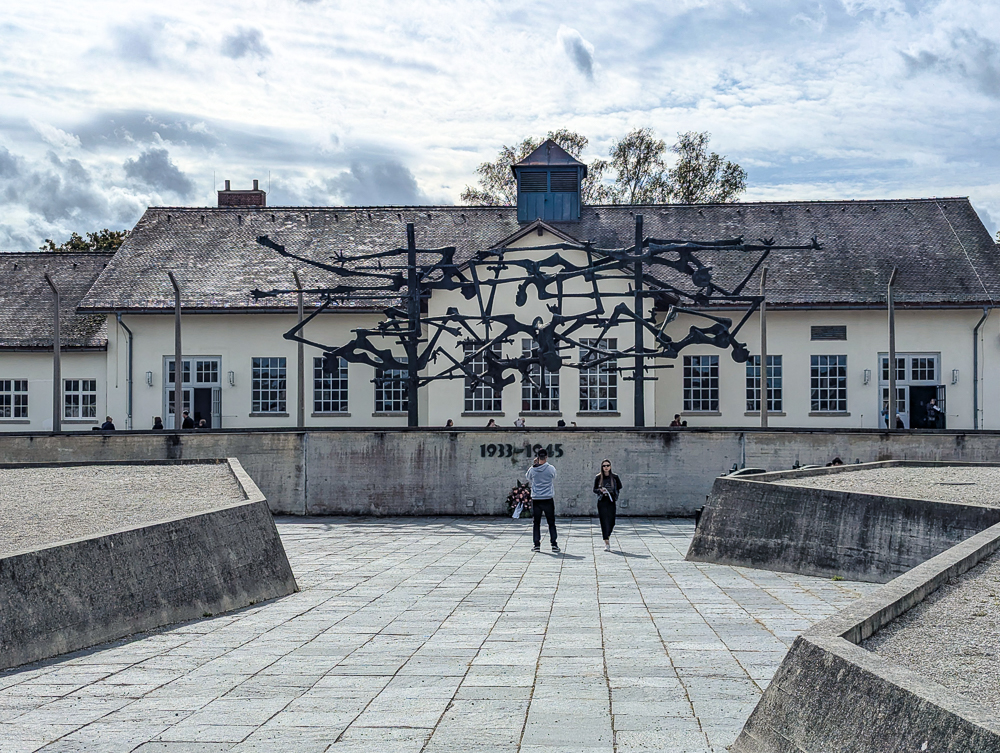
Site accessibility
The memorial site has taken some steps to make the site more accessible to all visitors, but it still presents its challenges. (The gravel, for instance.) However, here are a few things to know:
- Wheelchairs and e-scooters are available to borrow
- Many of the buildings have ramps – like the maintenance building, reconstructed barracks, crematorium, and more
- All indoor spaces and restrooms are wheelchair friendly
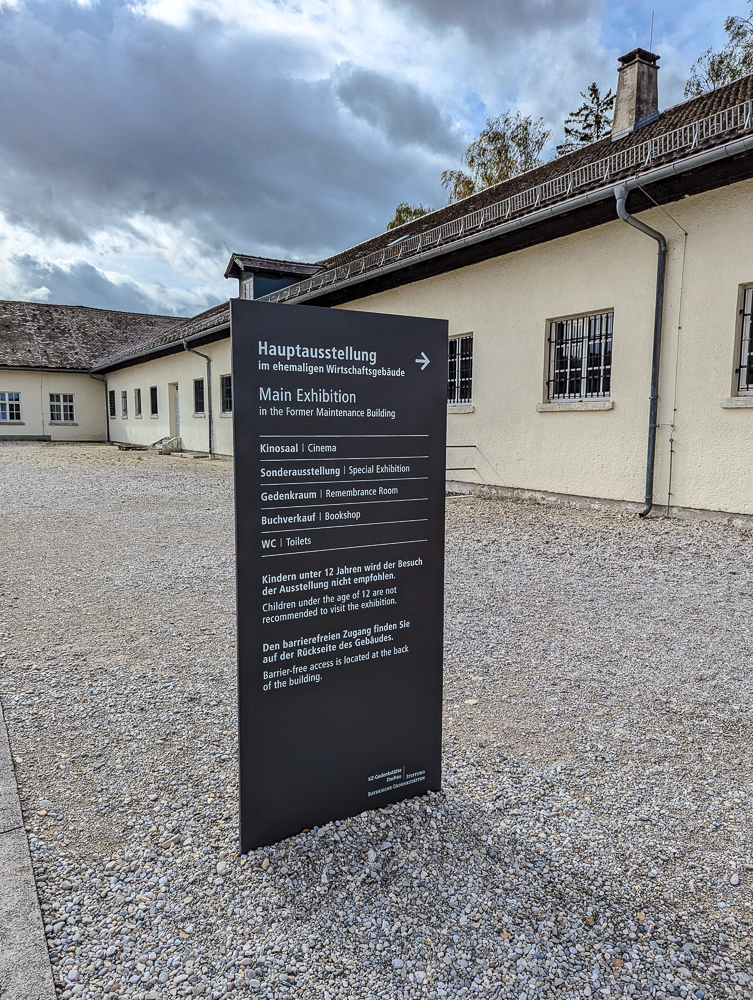
Visiting Dachau Concentration Camp: necessary info
Dachau hours
Dachau Concentration Camp is open daily from 9am – 5pm,364 days a year. It’s closed only on December 24th.
Dachau costs
- Visiting Dachau Concentration Camp is free. (There’s no entrance admission or ticket required.)
- Guided tours cost 4€
- Audio guides cost 4.5€ to rent + a refundable deposit
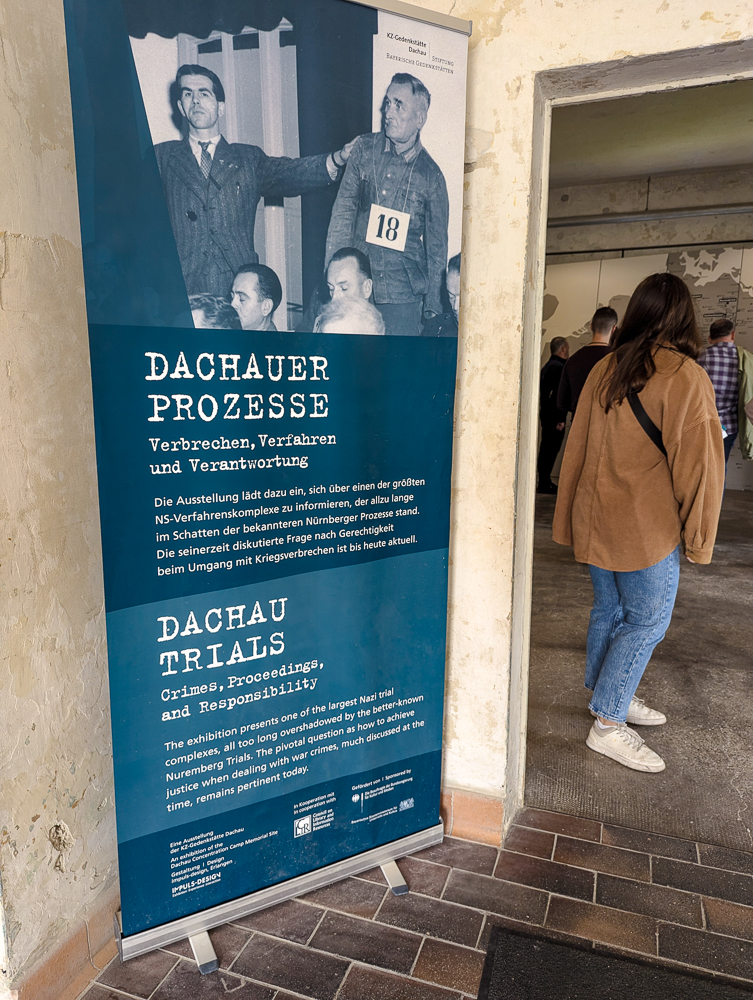
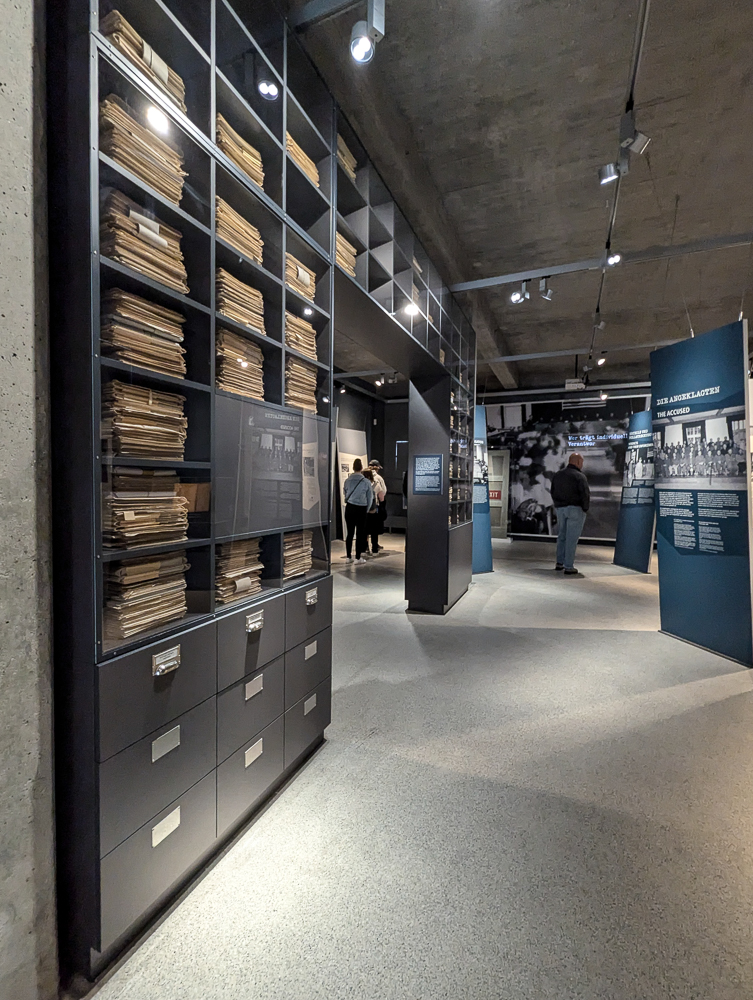
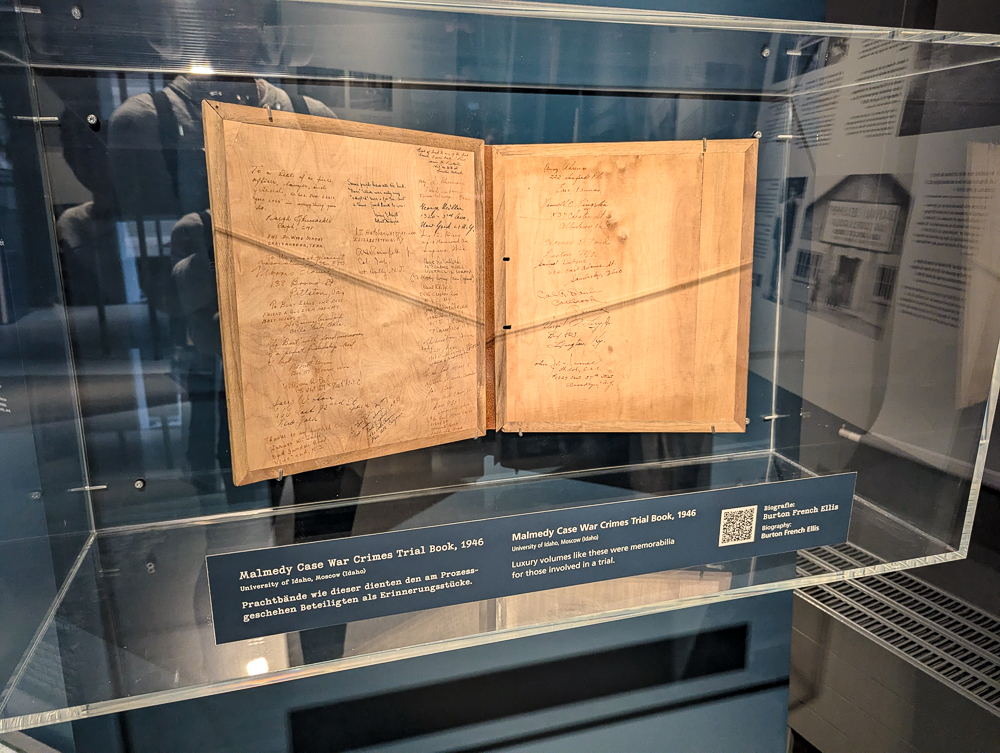
Here’s hoping you have a terrible day visiting Dachau Concentration Camp.
(That means you learned a lot.)


More resources for visiting Dachau Concentration Camp
- Hotels: Find great places to stay in Munich here on Booking.com (but Hotels.com and Expedia are also worth checking). VRBO is best for apartment rentals.
- Rental cars: Check out the best local rental car deals here.
- Travel planning: Don’t forget a Germany guidebook and this Germany customs and culture guide
- Local tours: See all the great options from Viator and Get Your Guide here.
- Want more? See all my Germany posts here.
Like this post? Have questions about visiting Dachau? Let me know in the comments below!

Save this info, pin these images:

